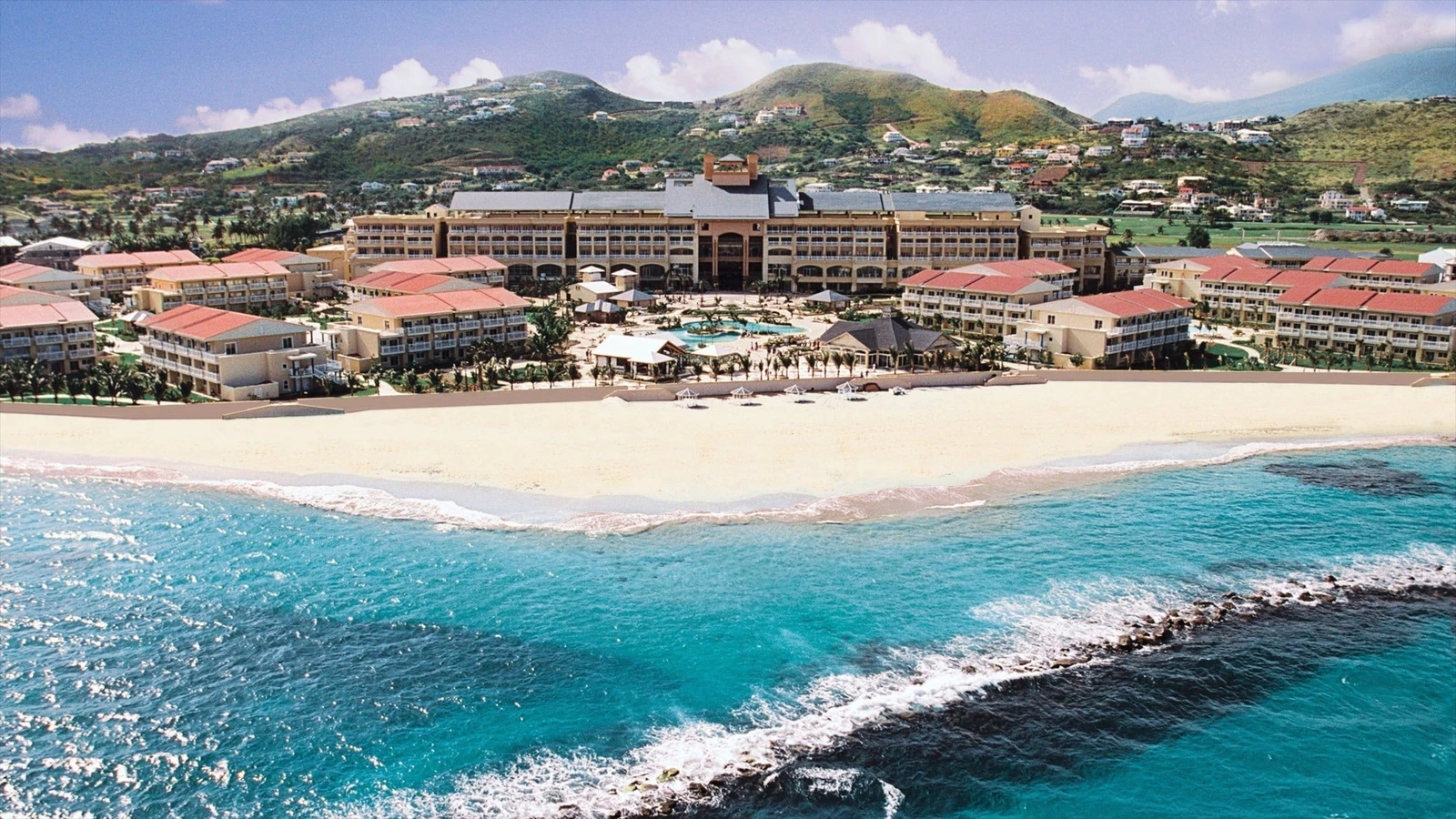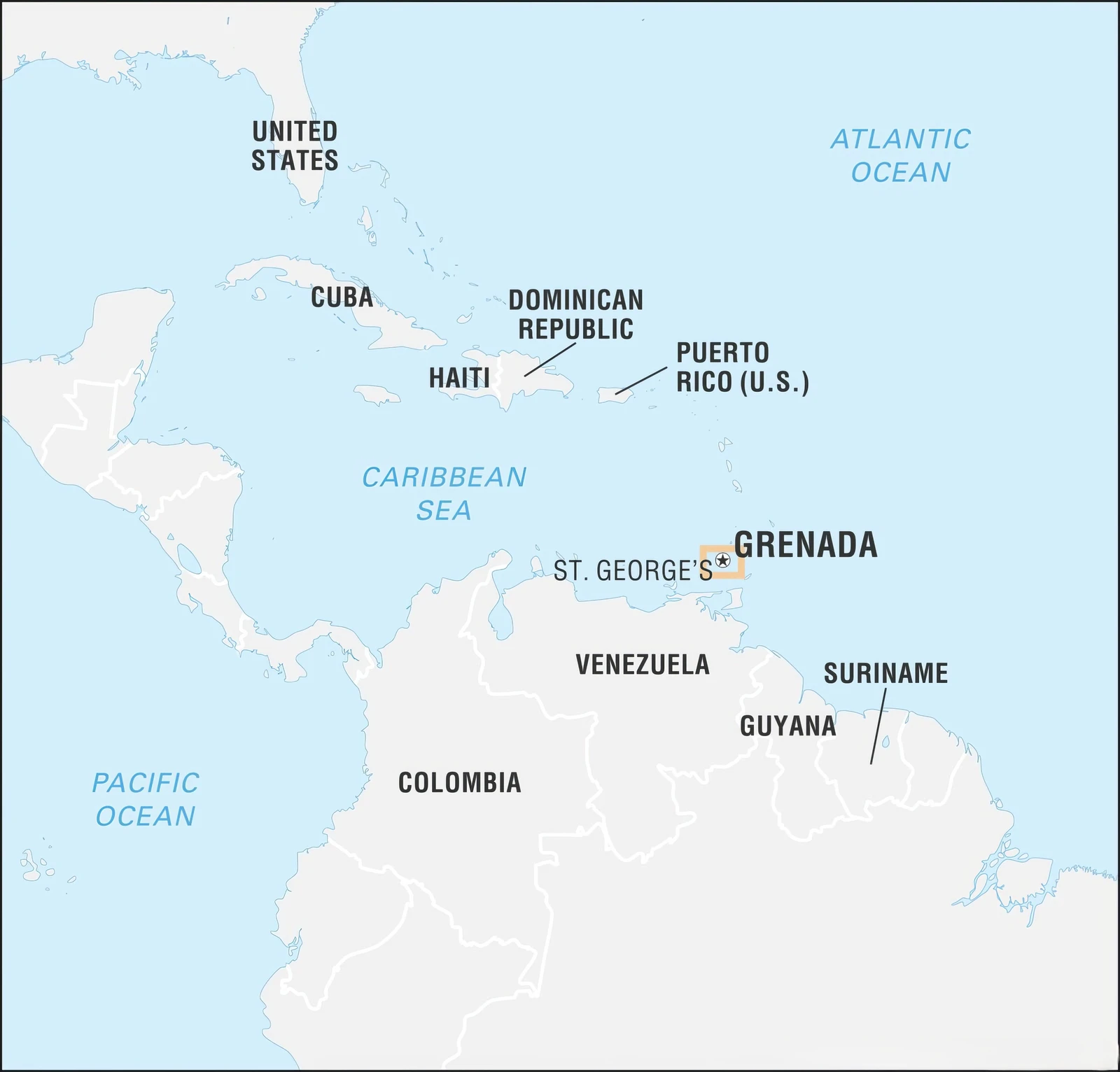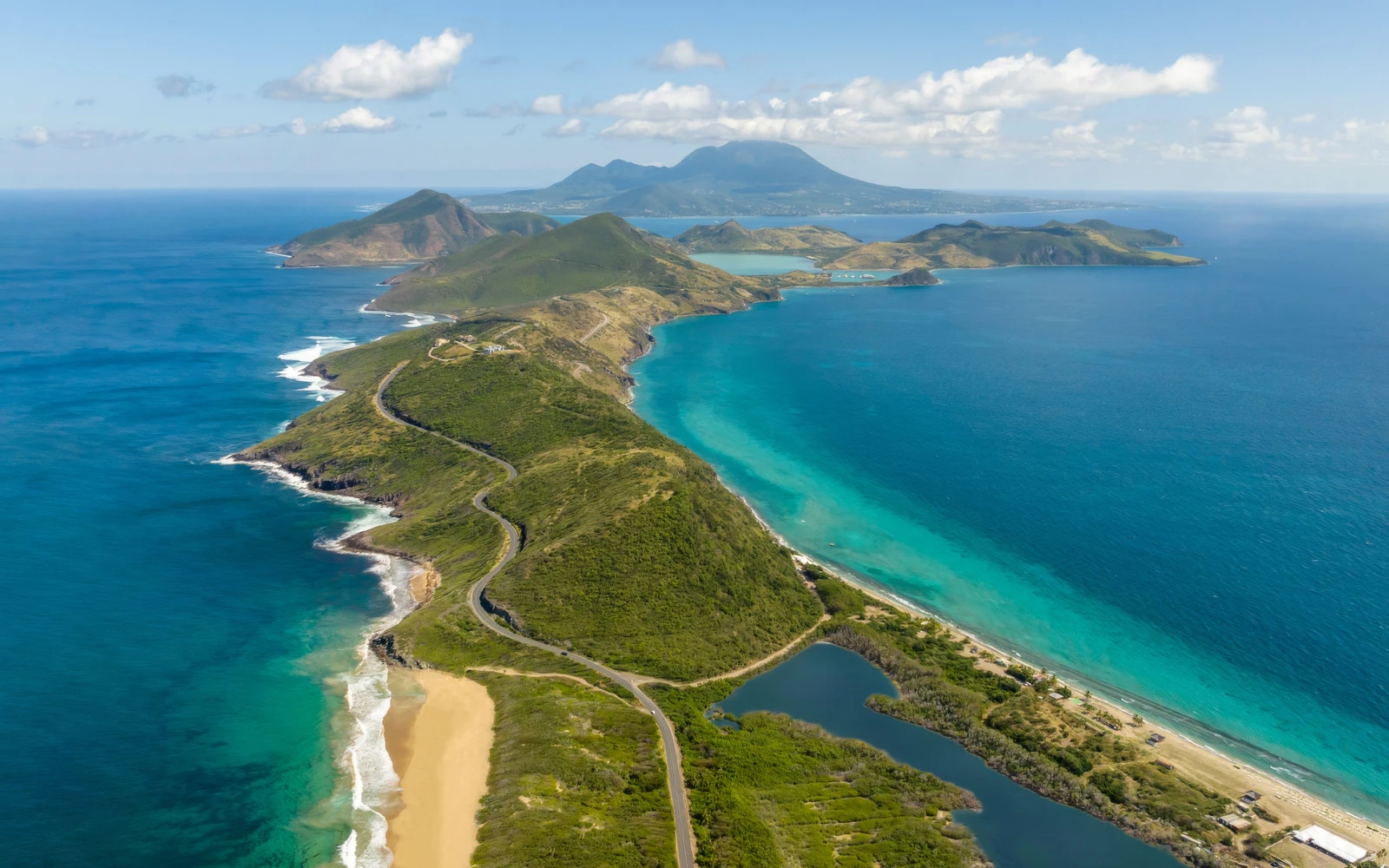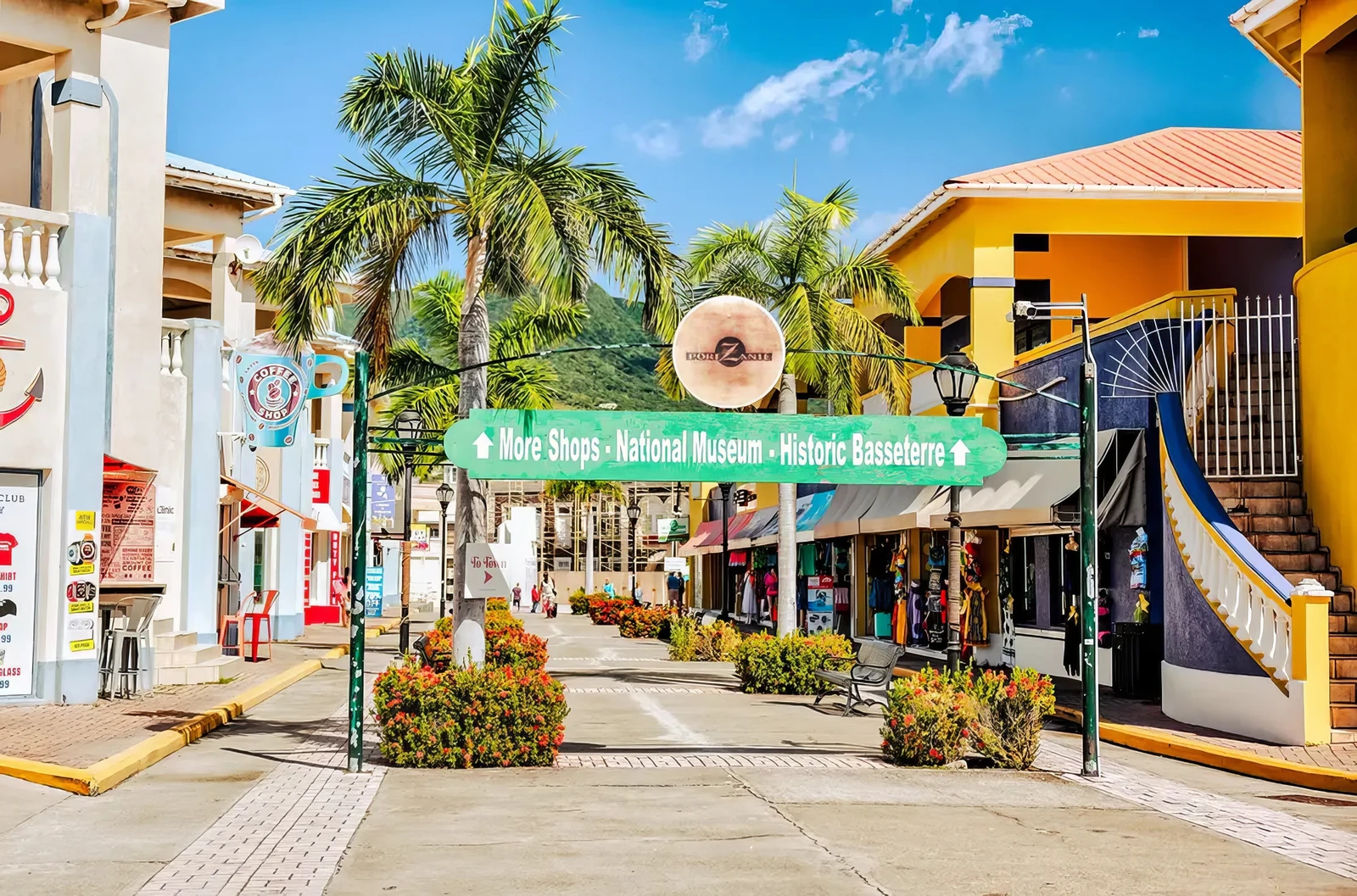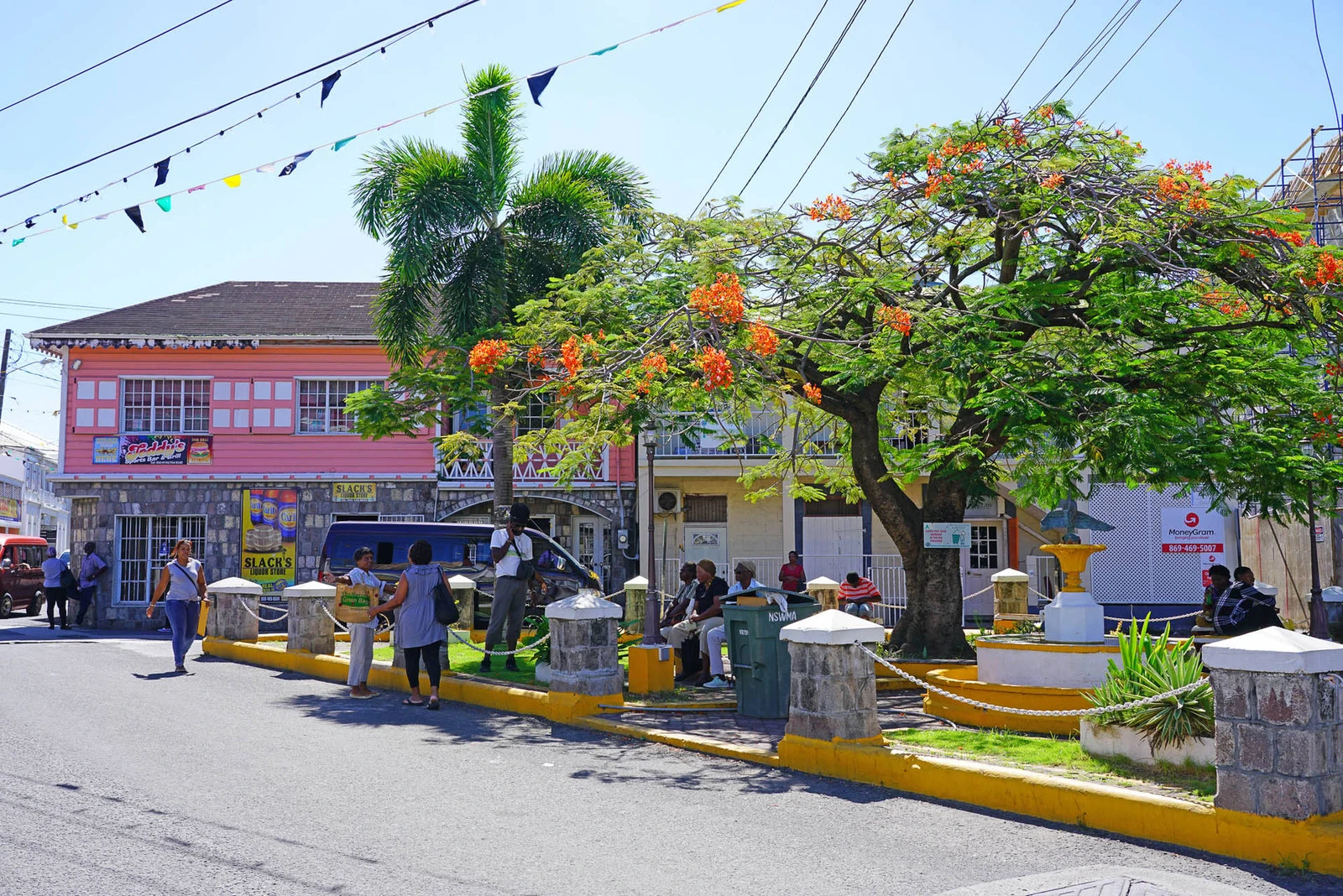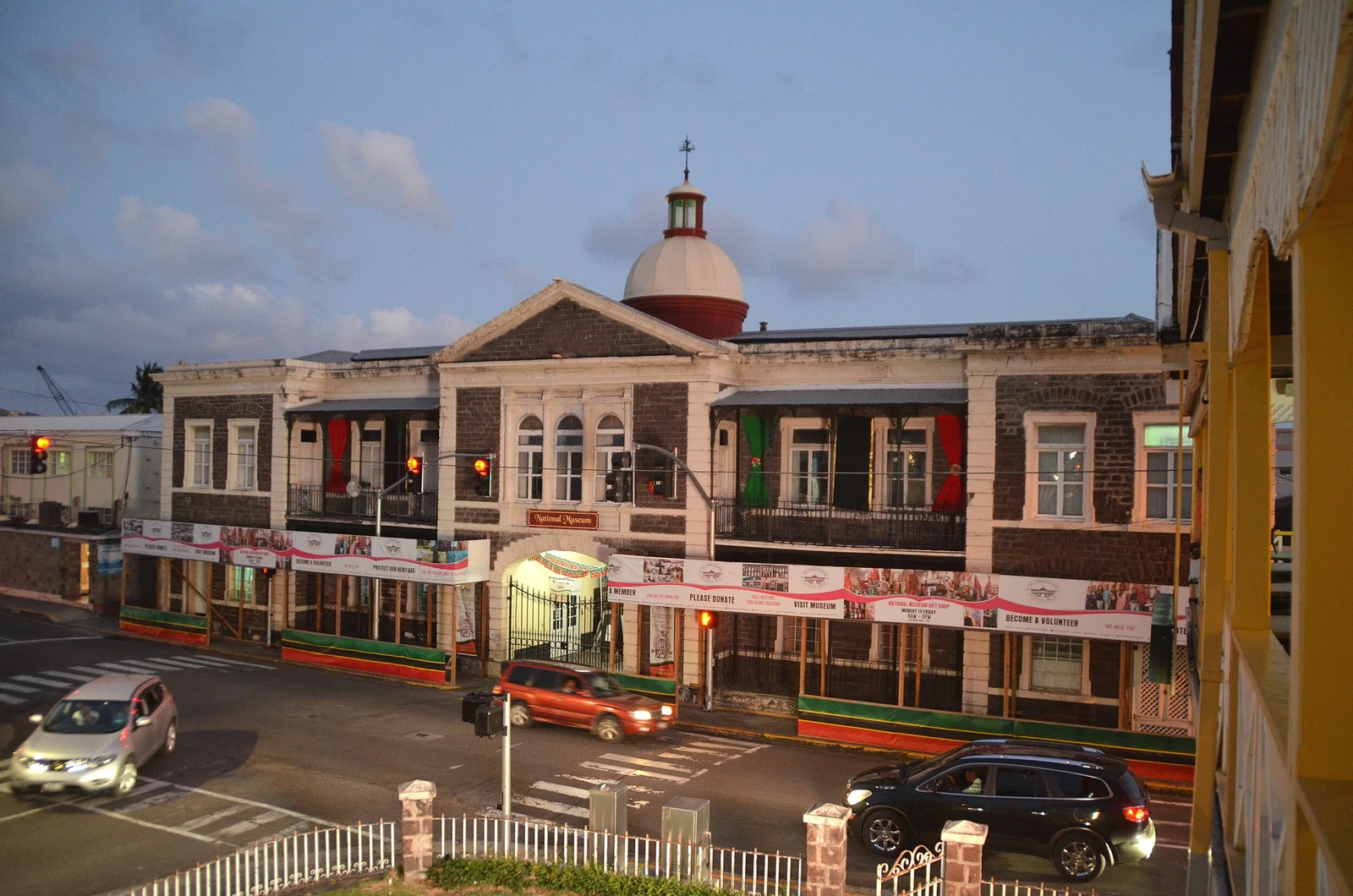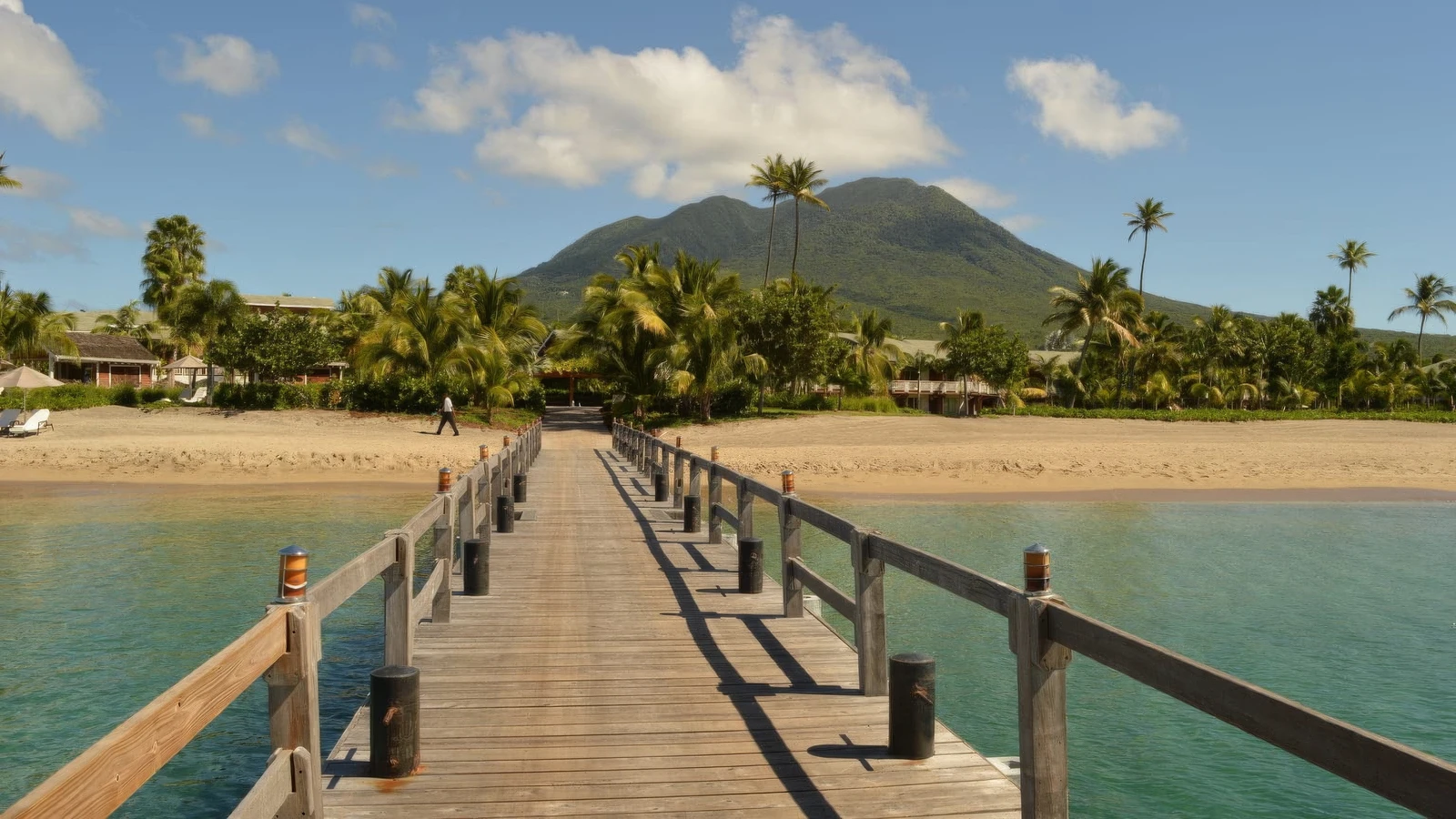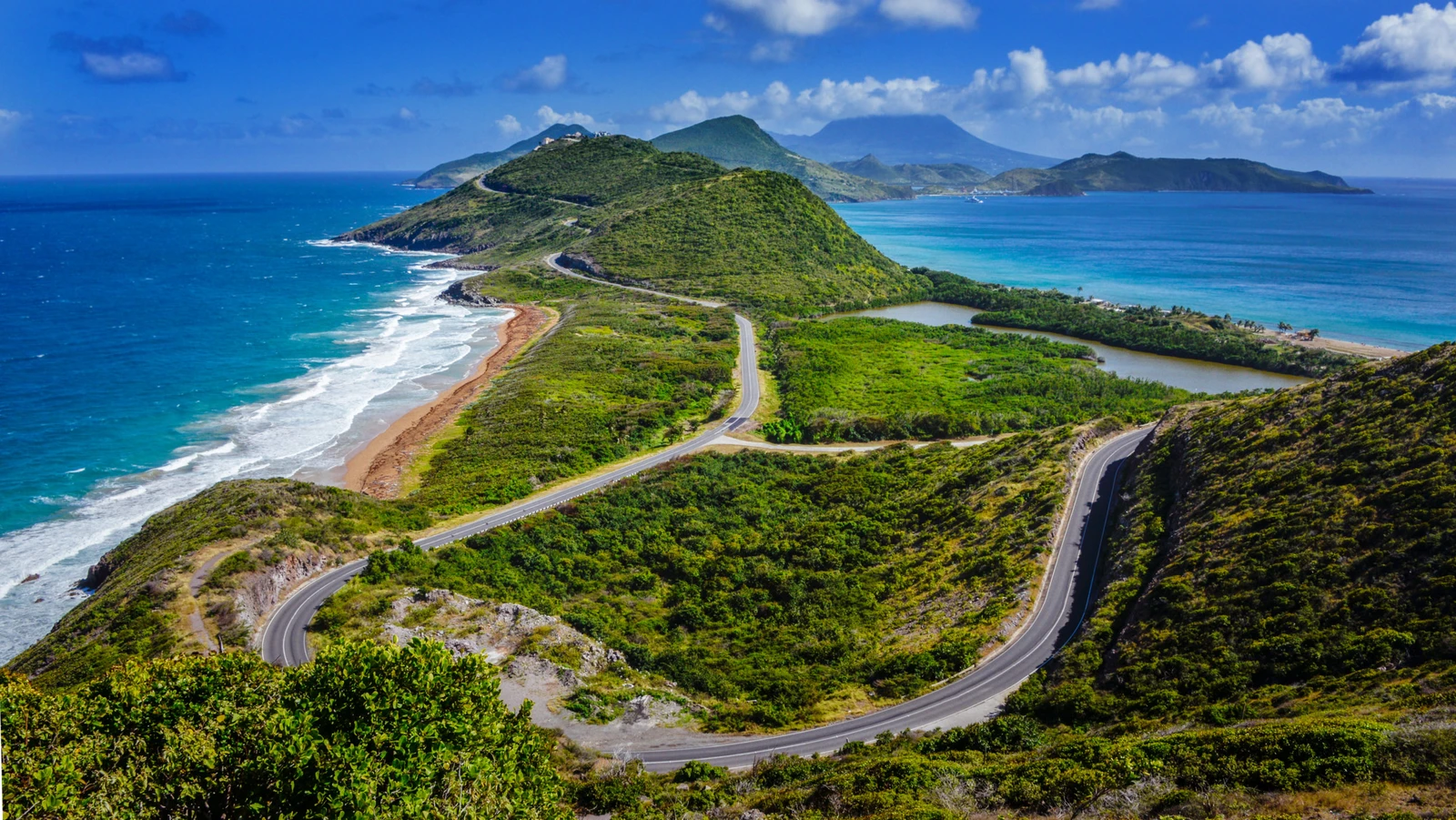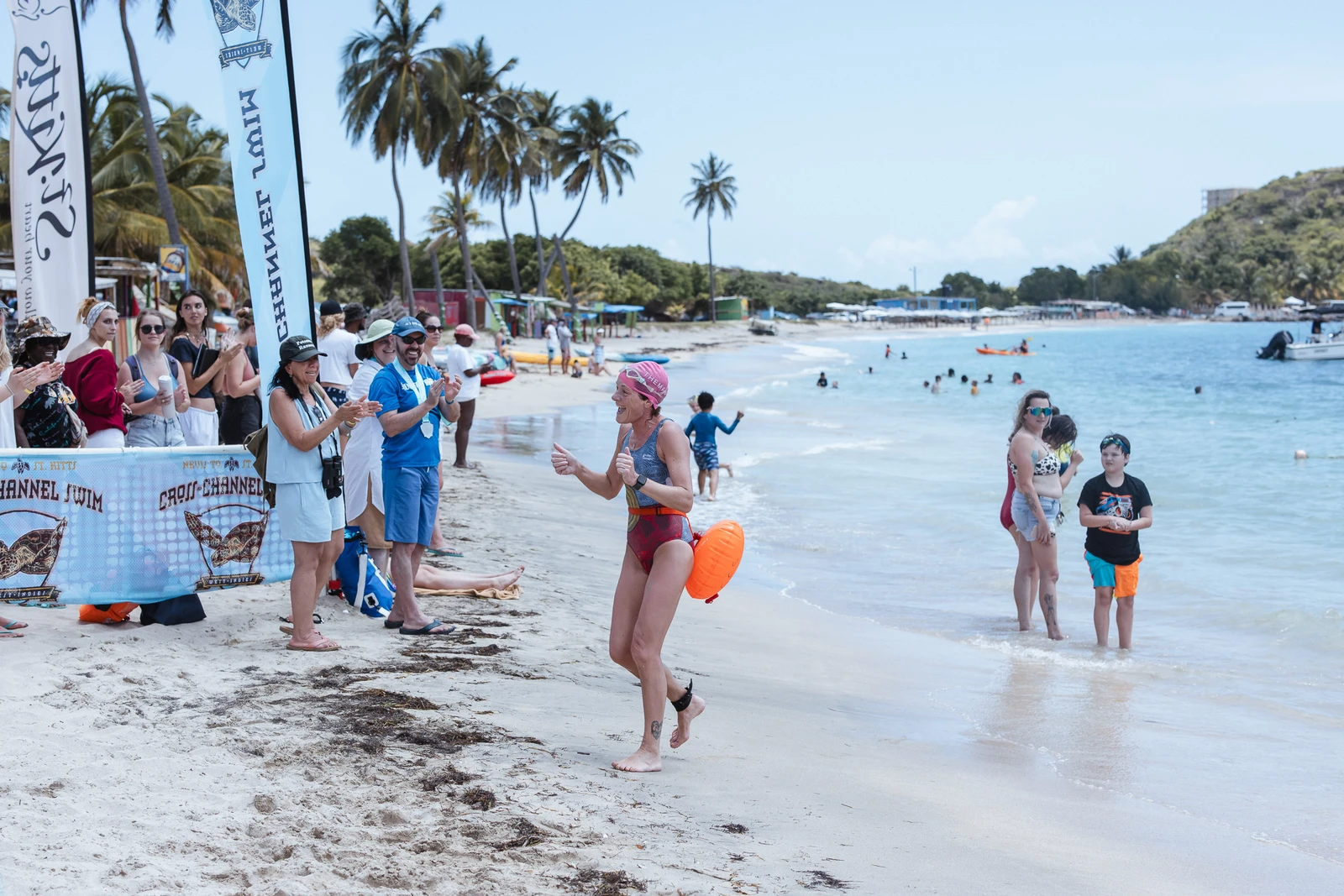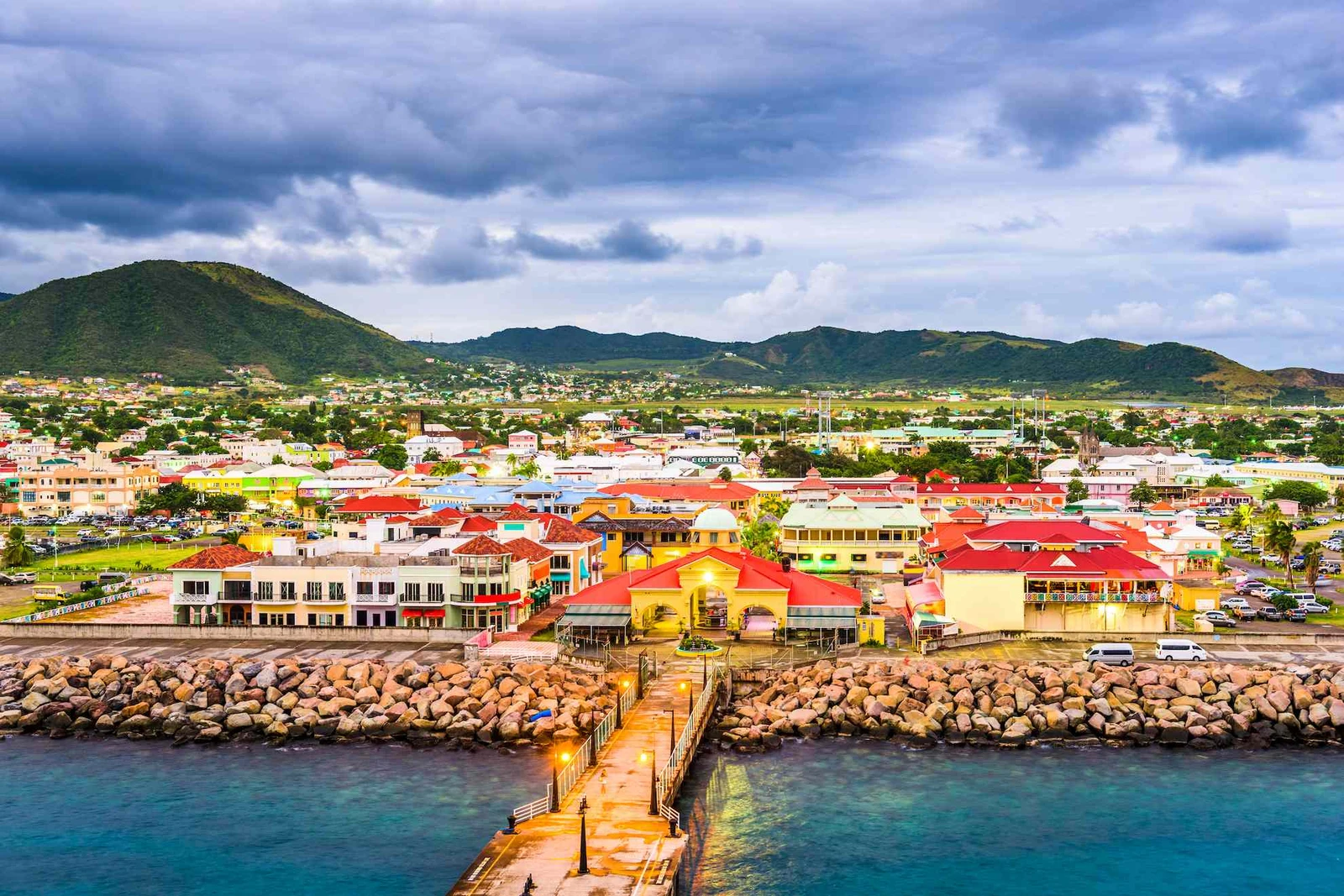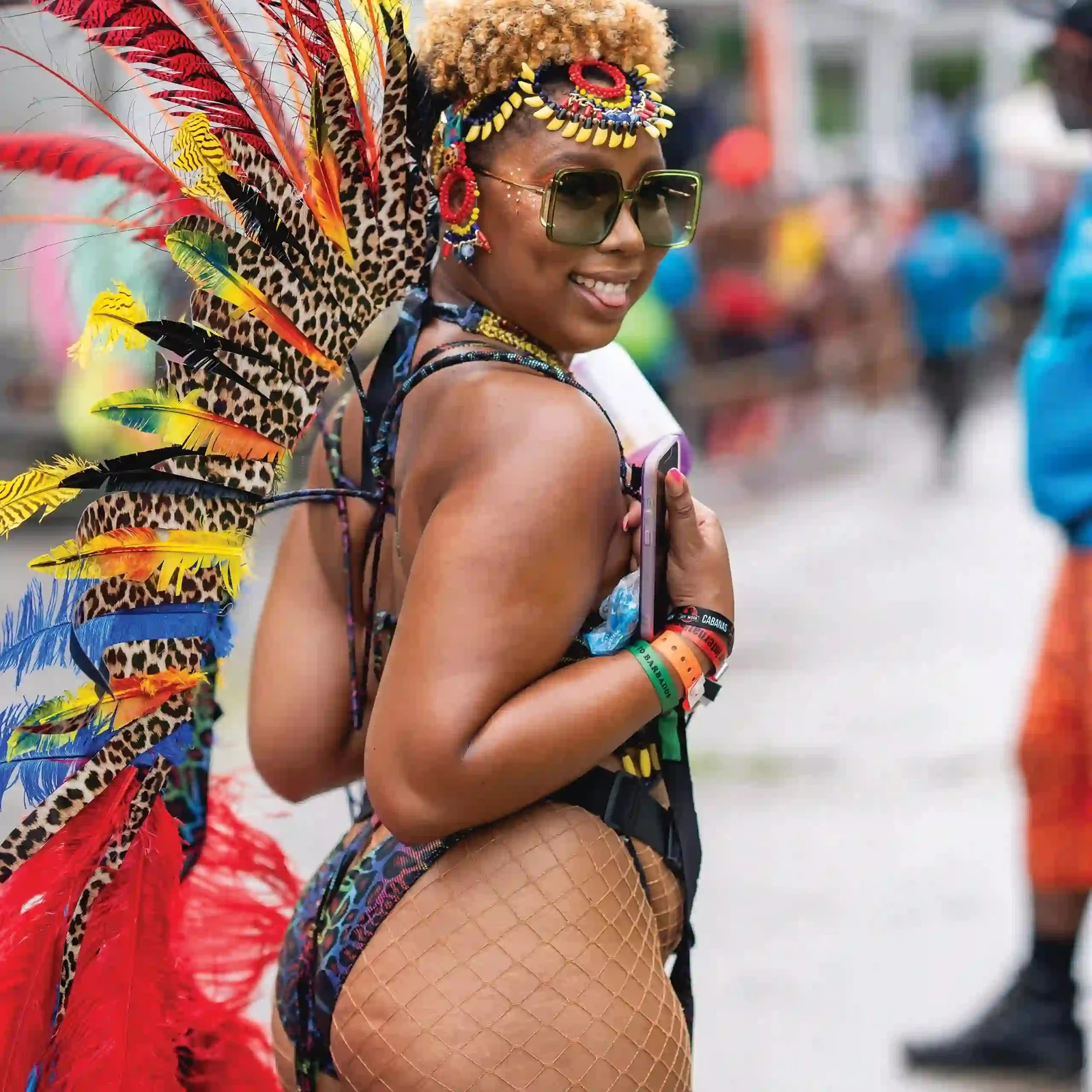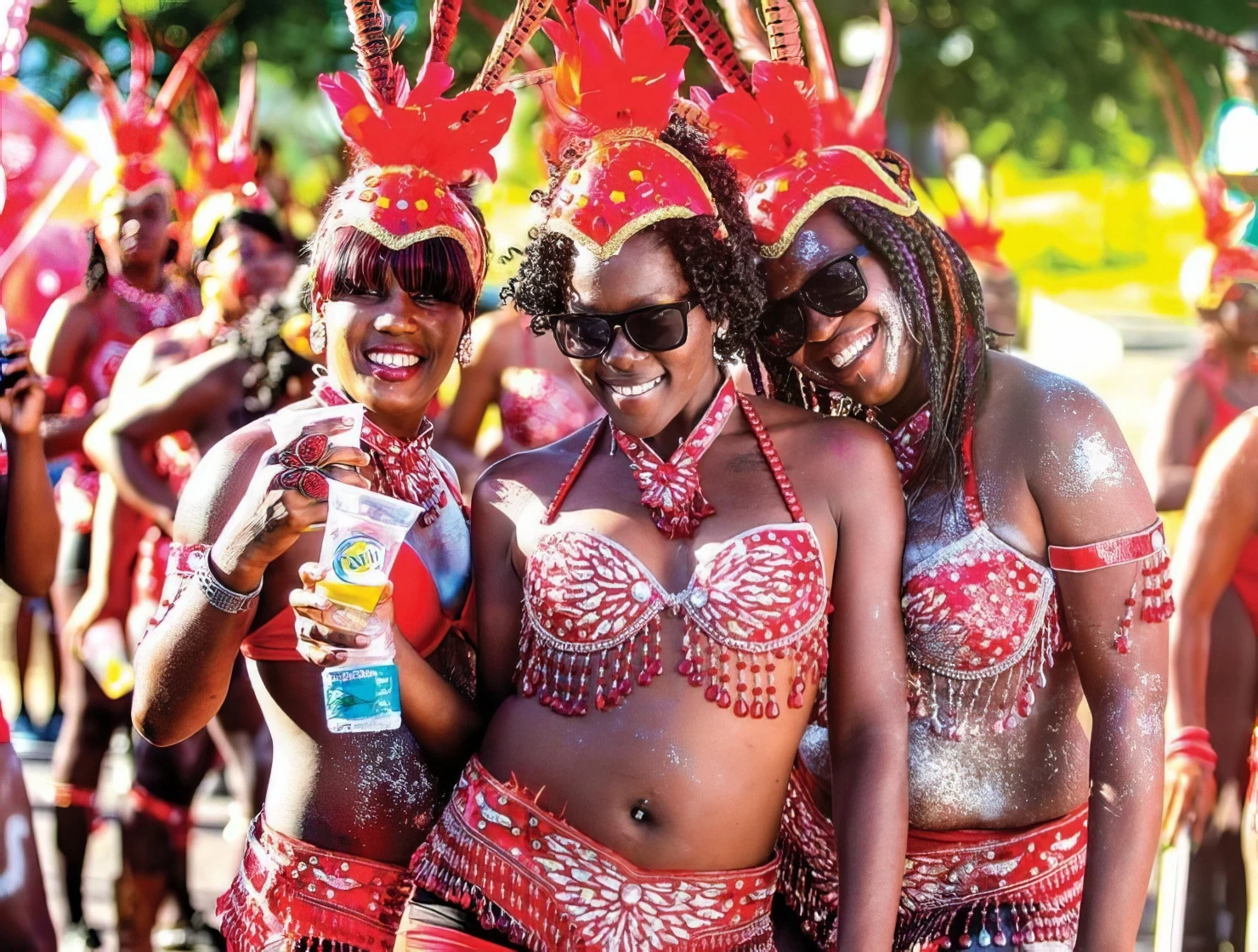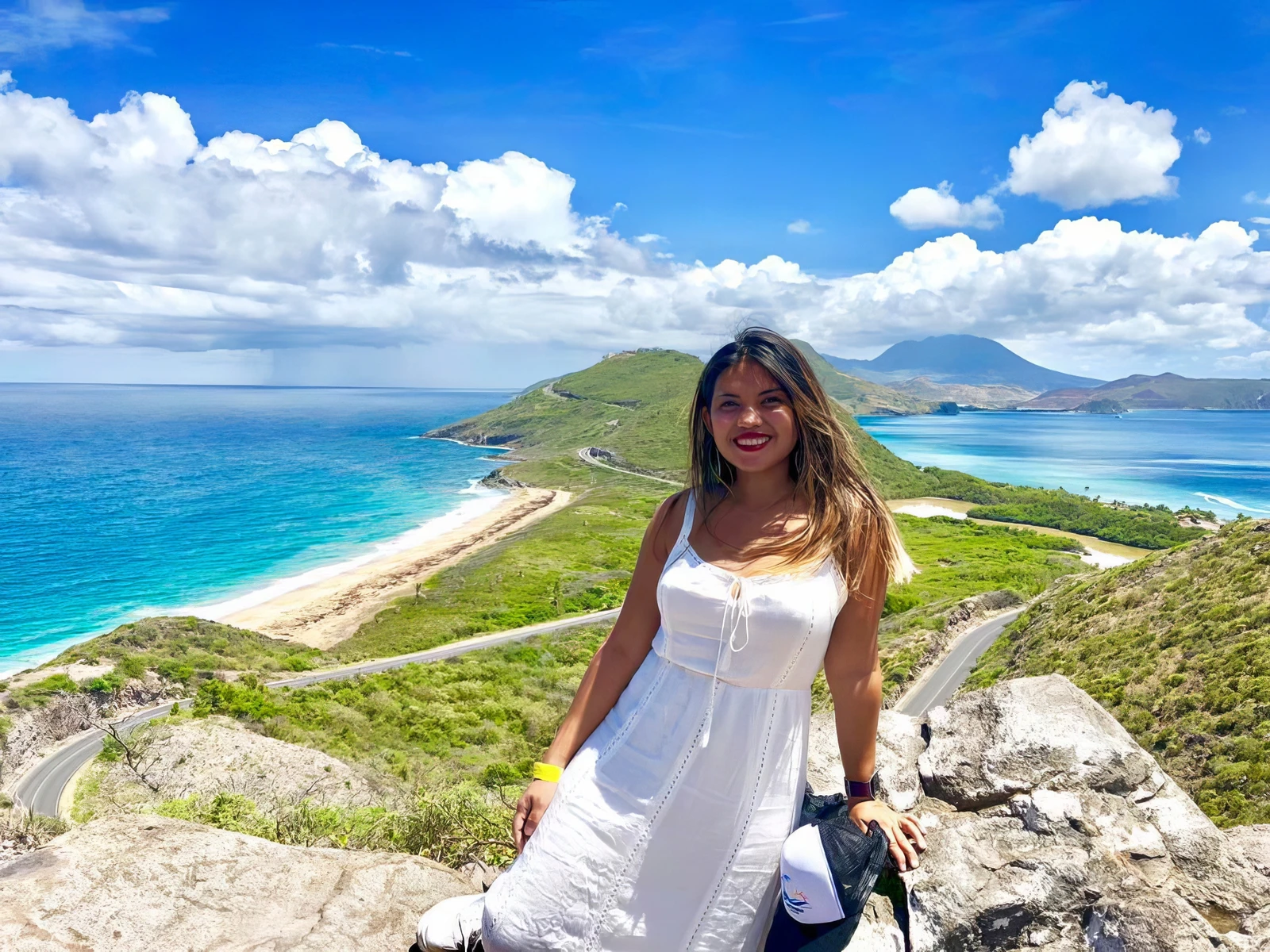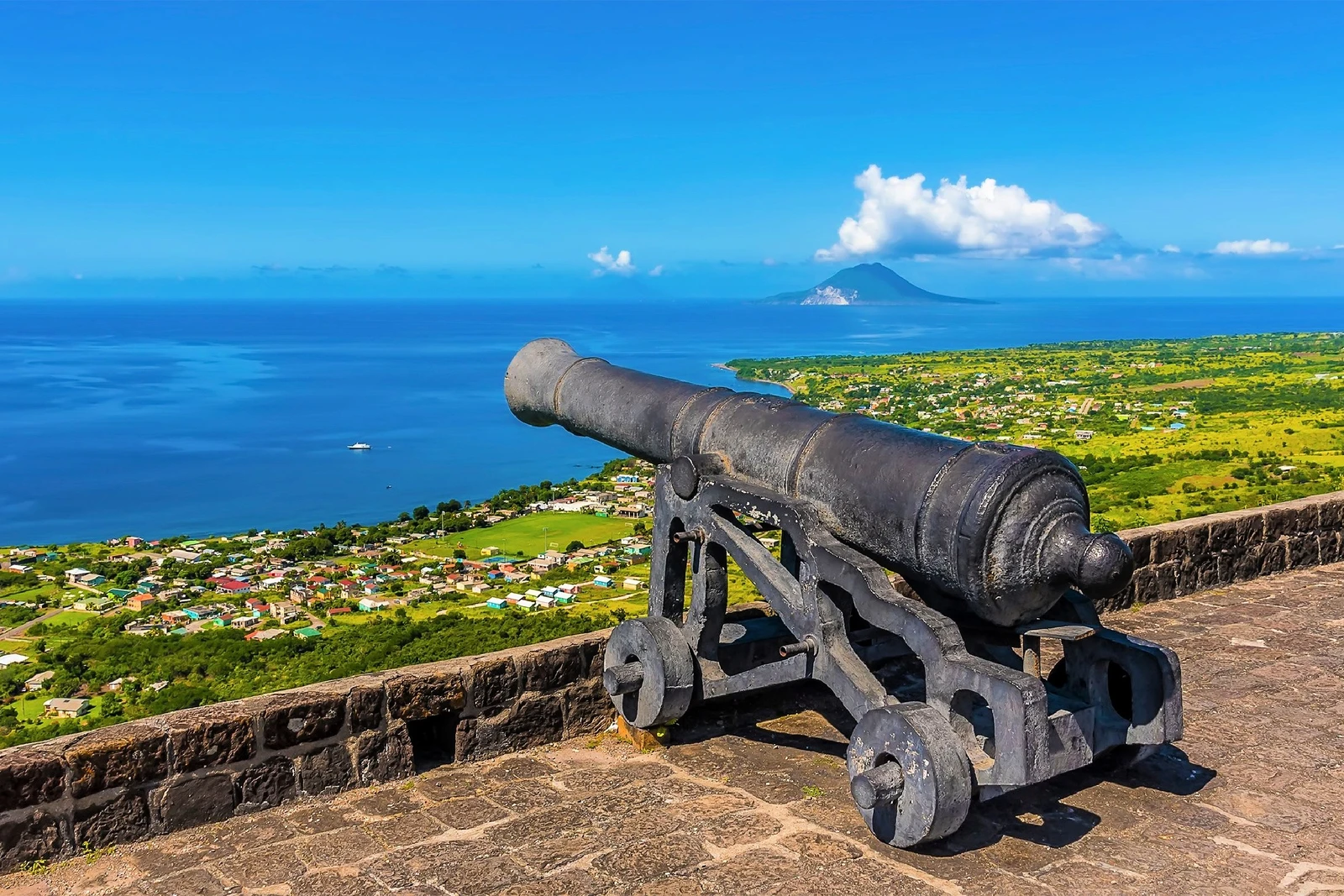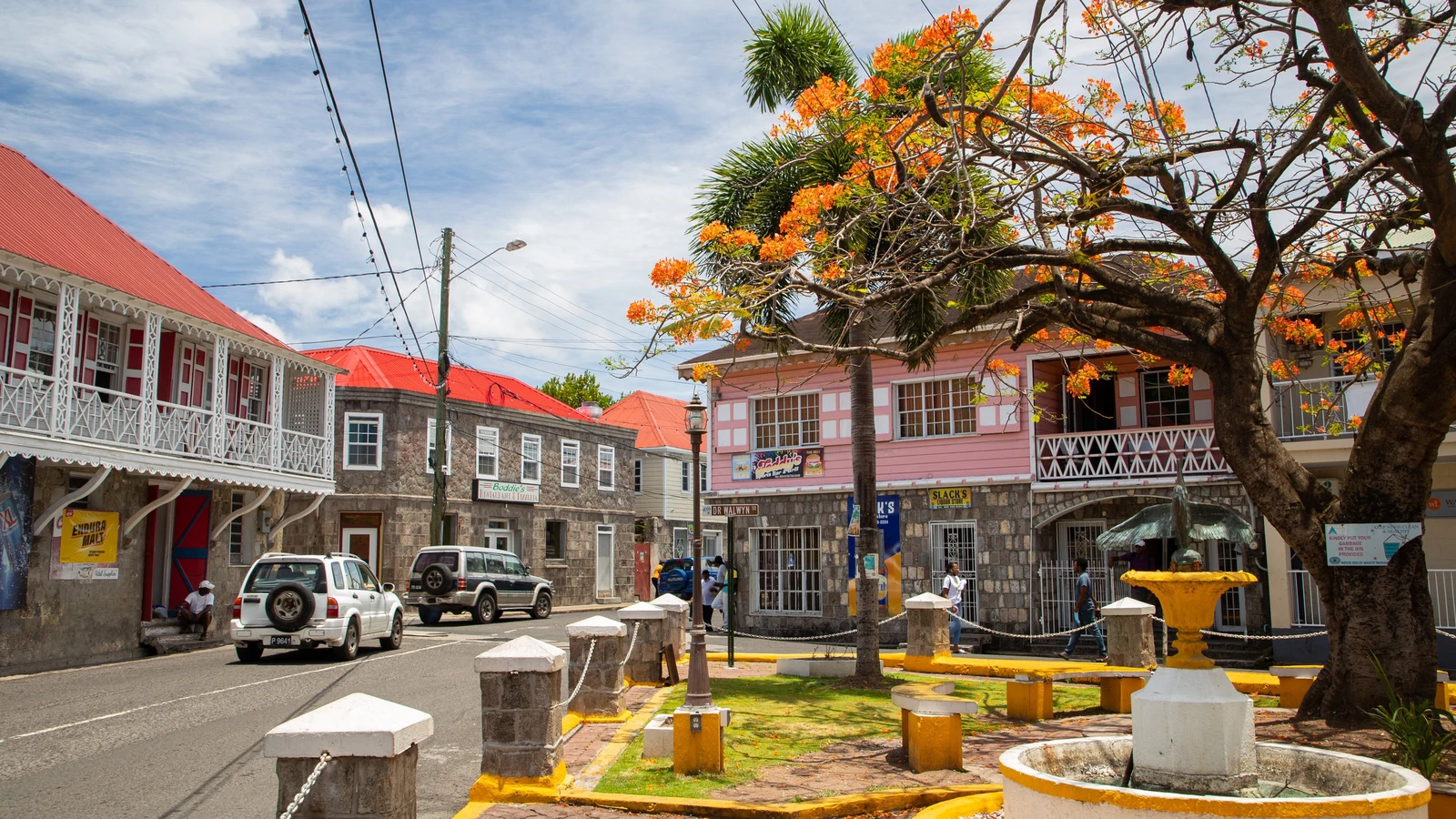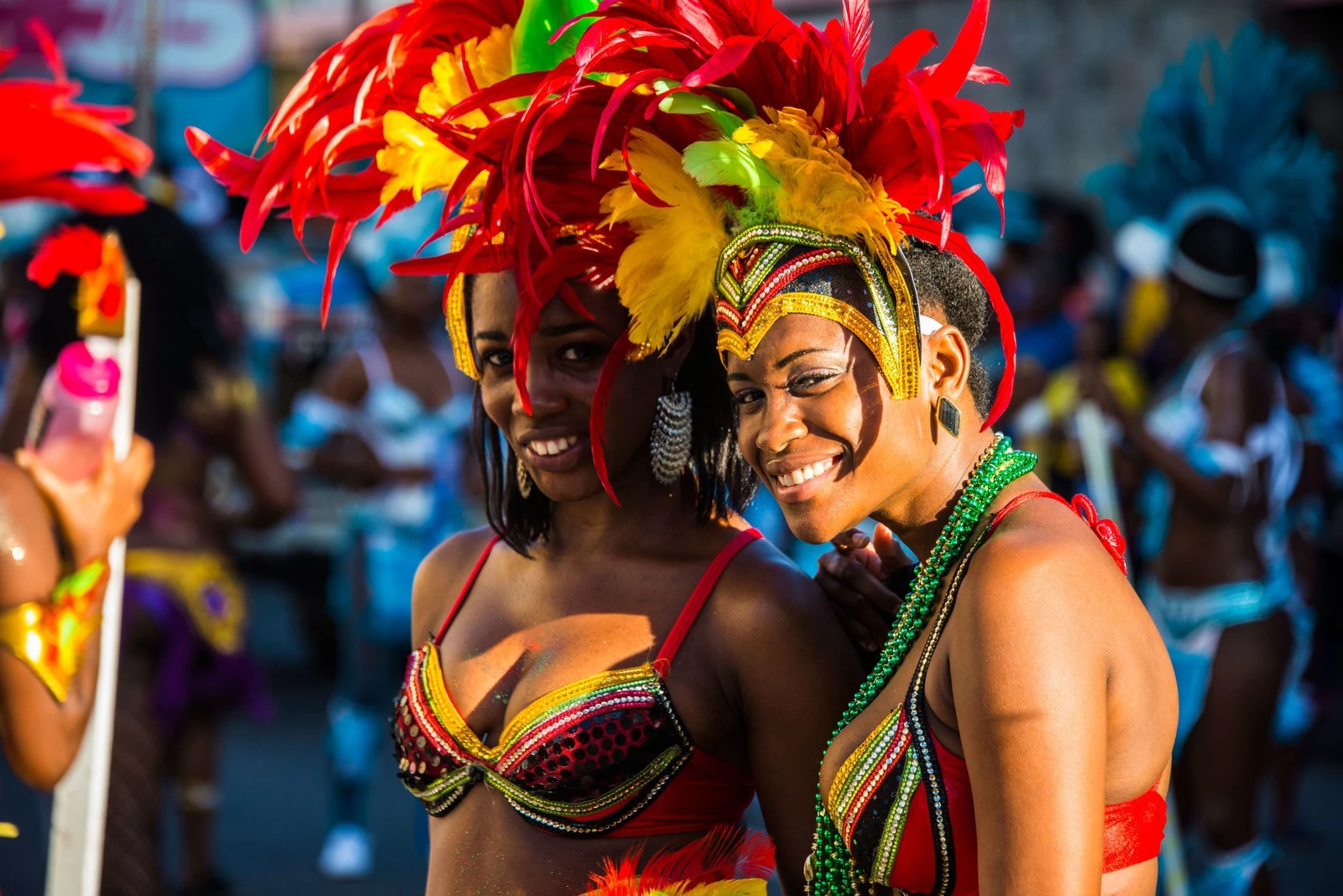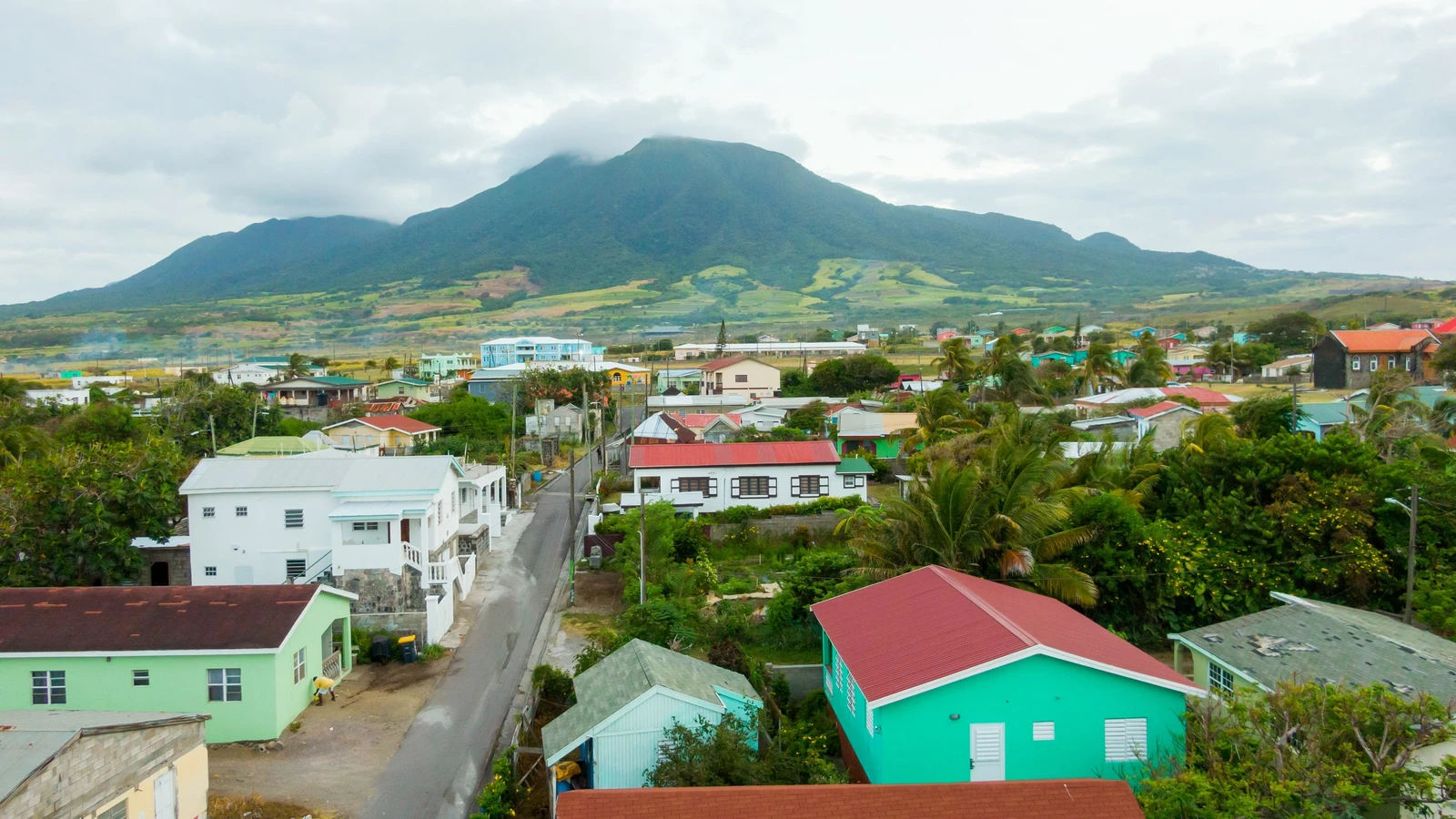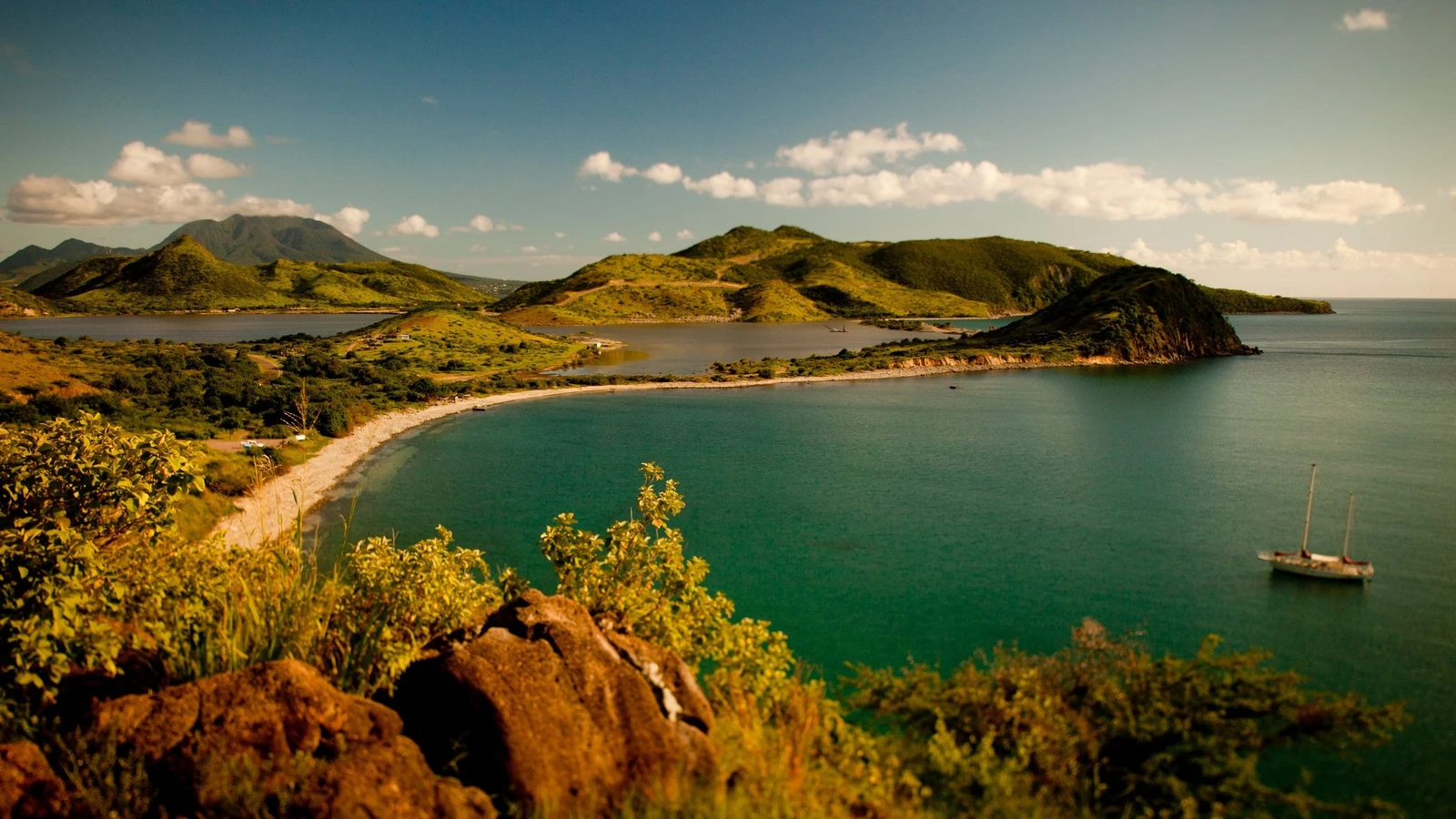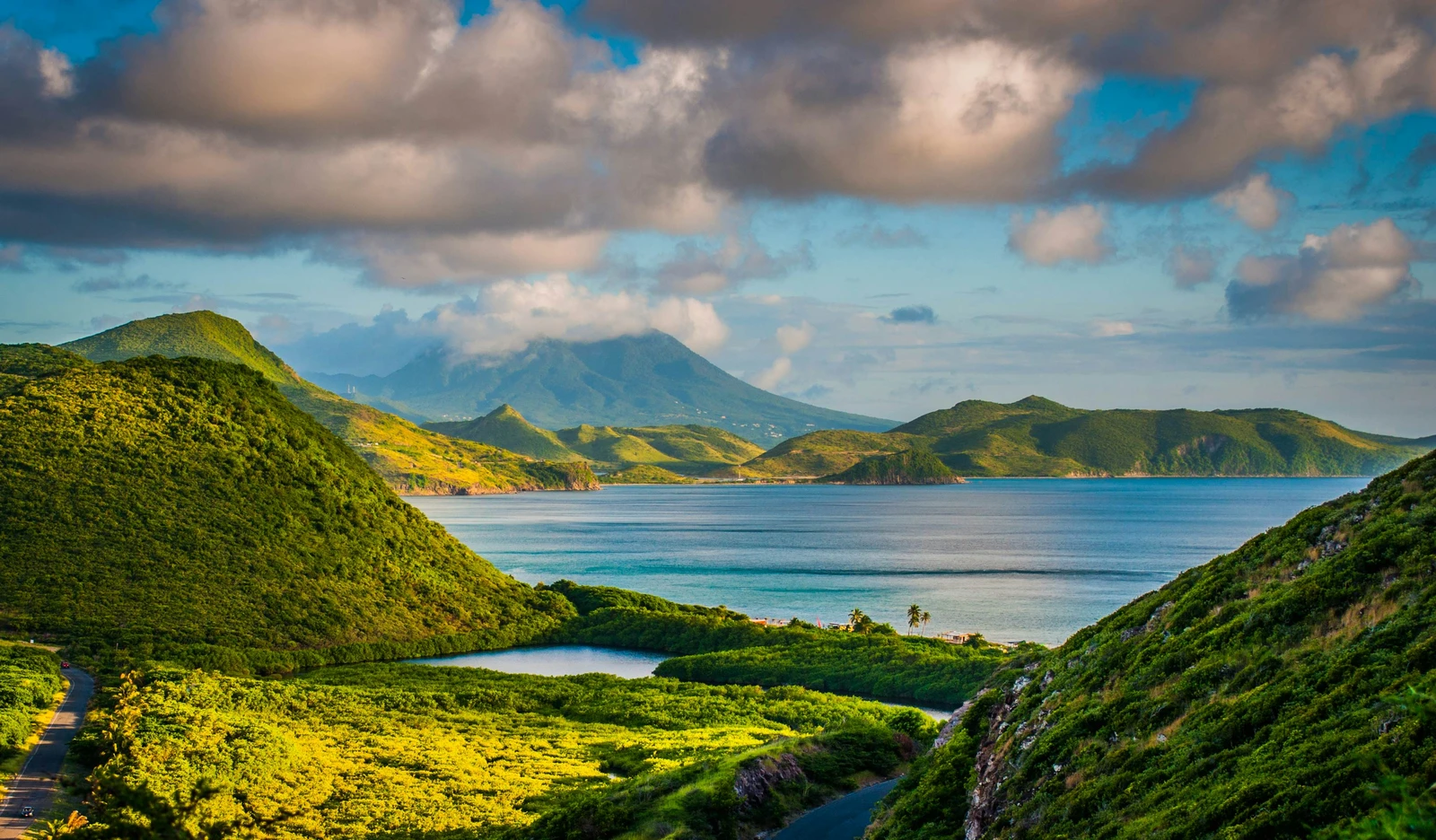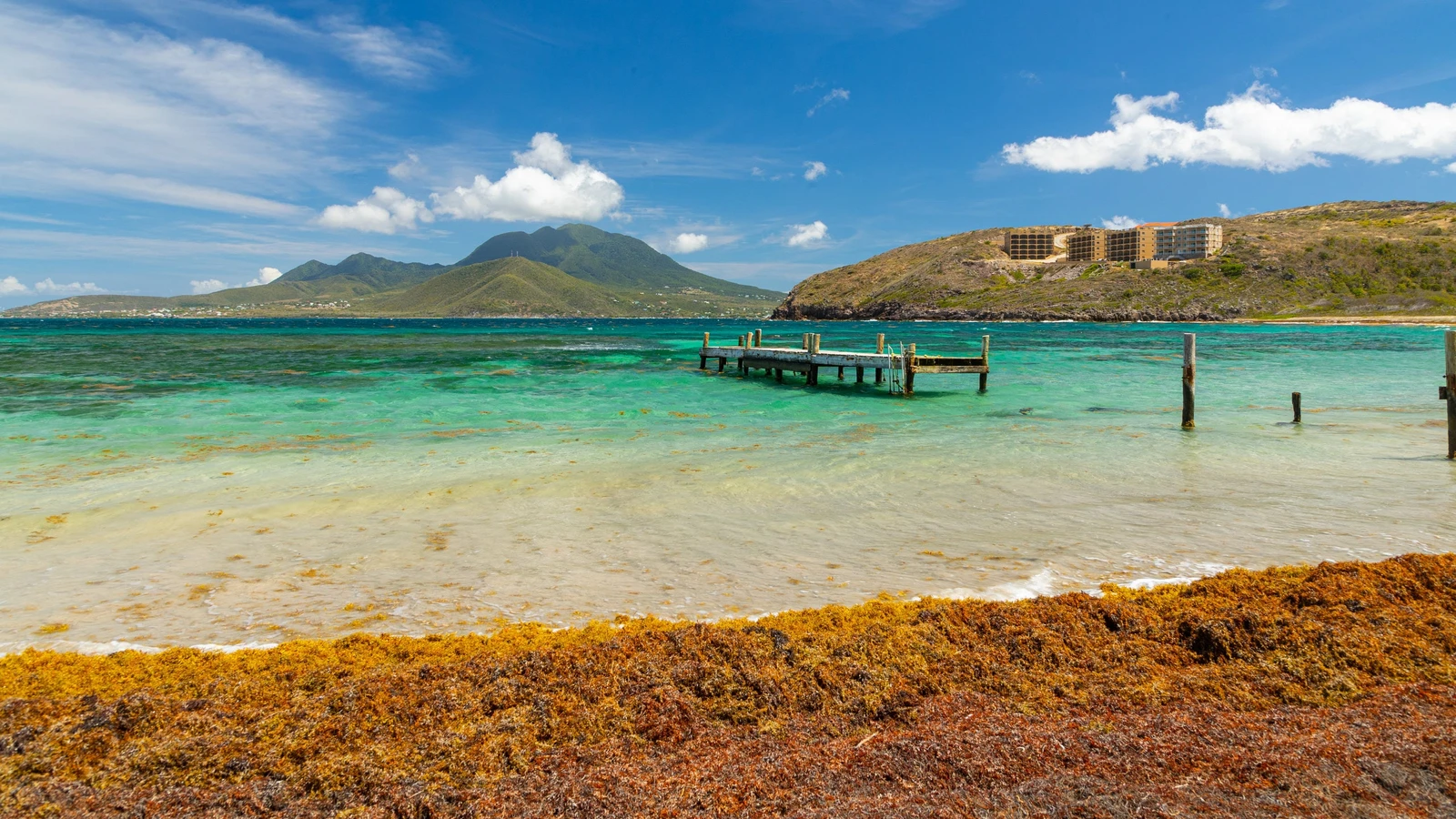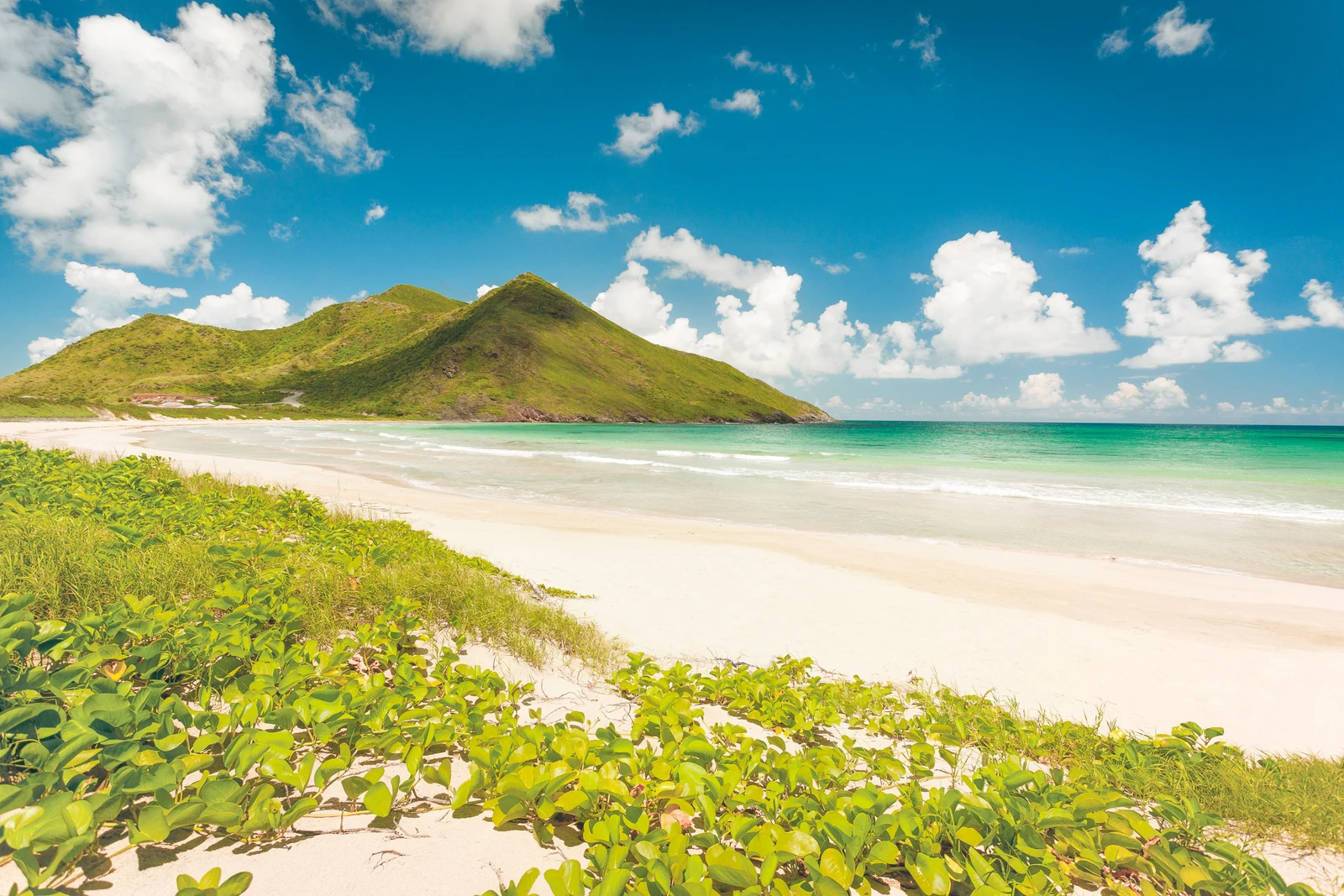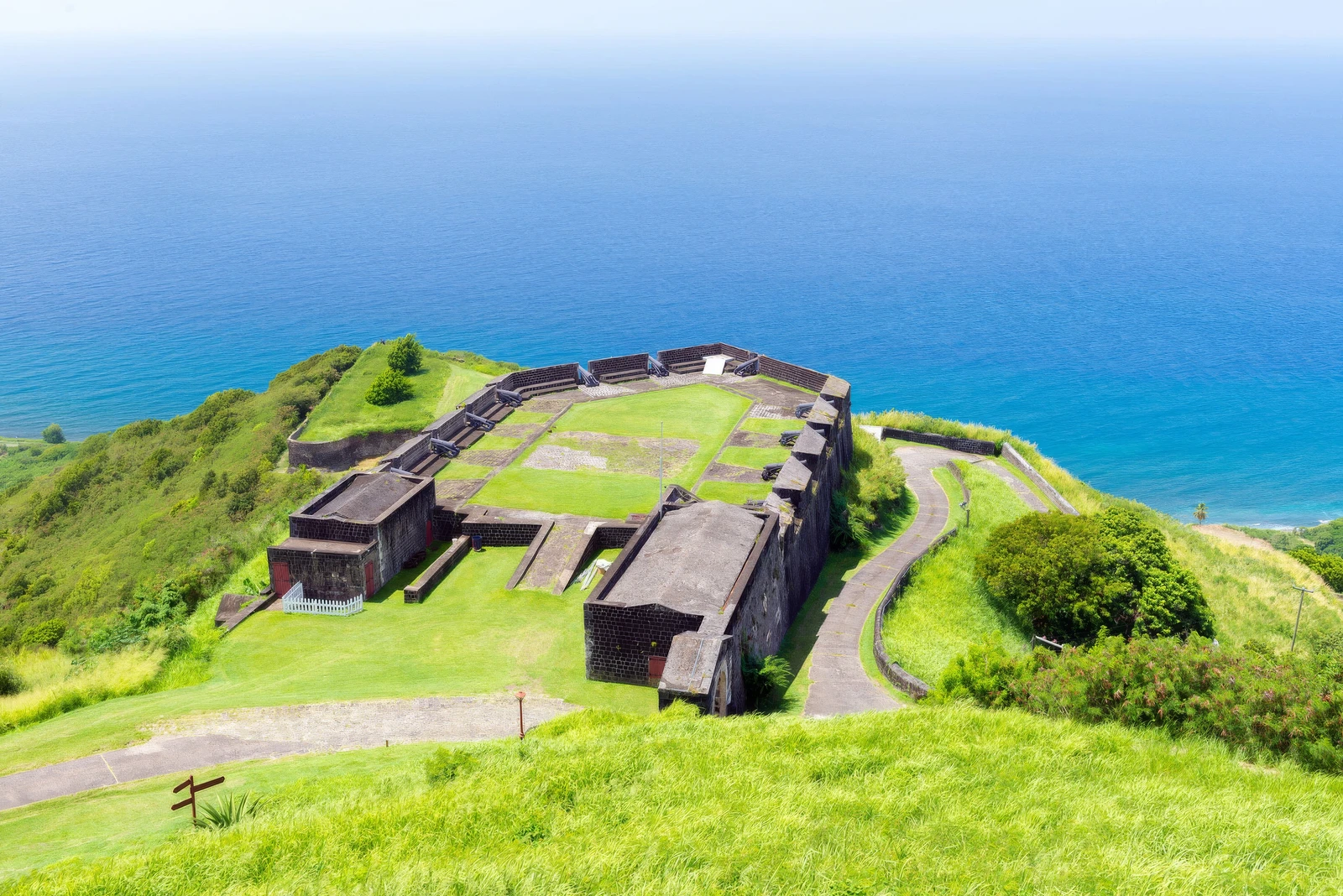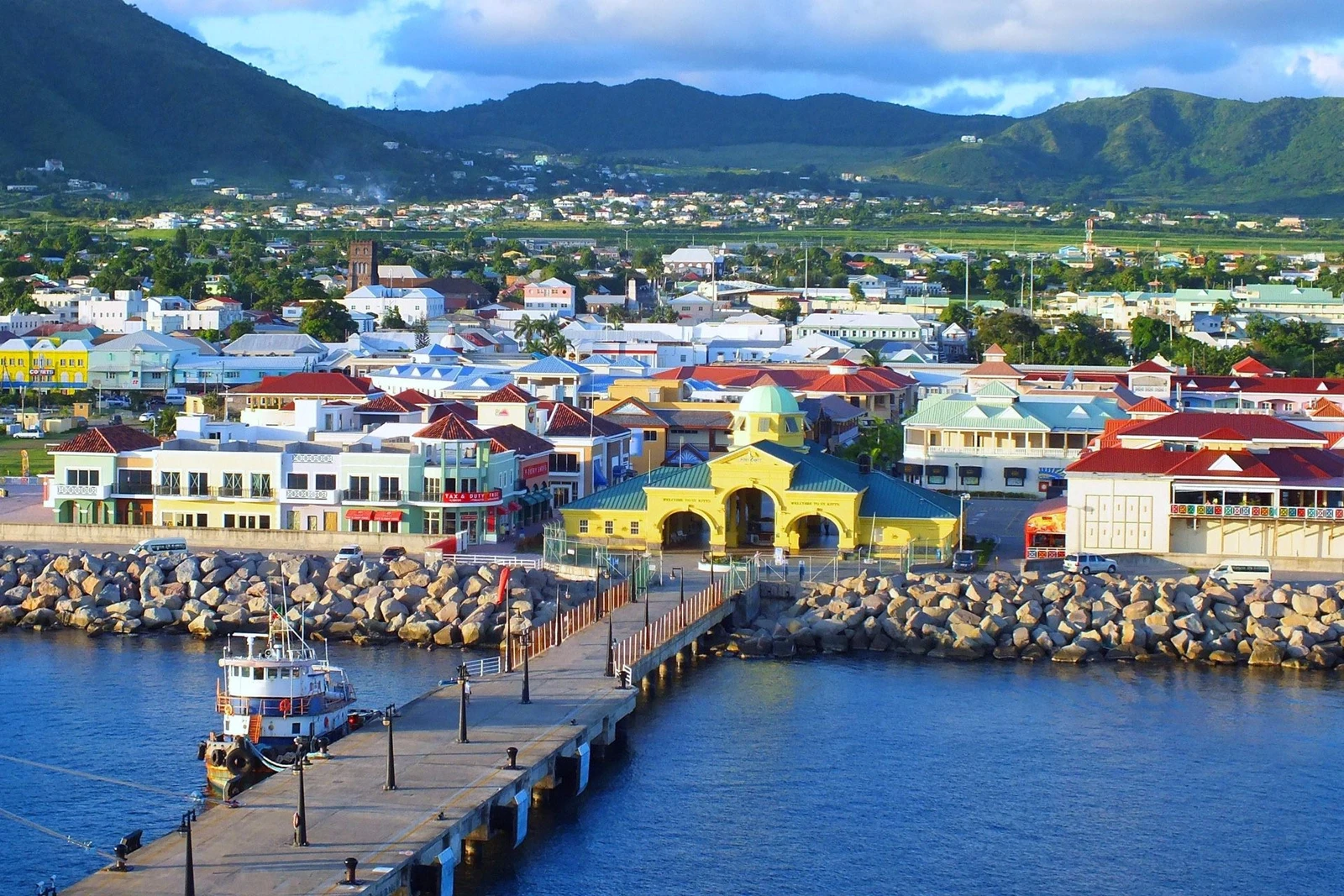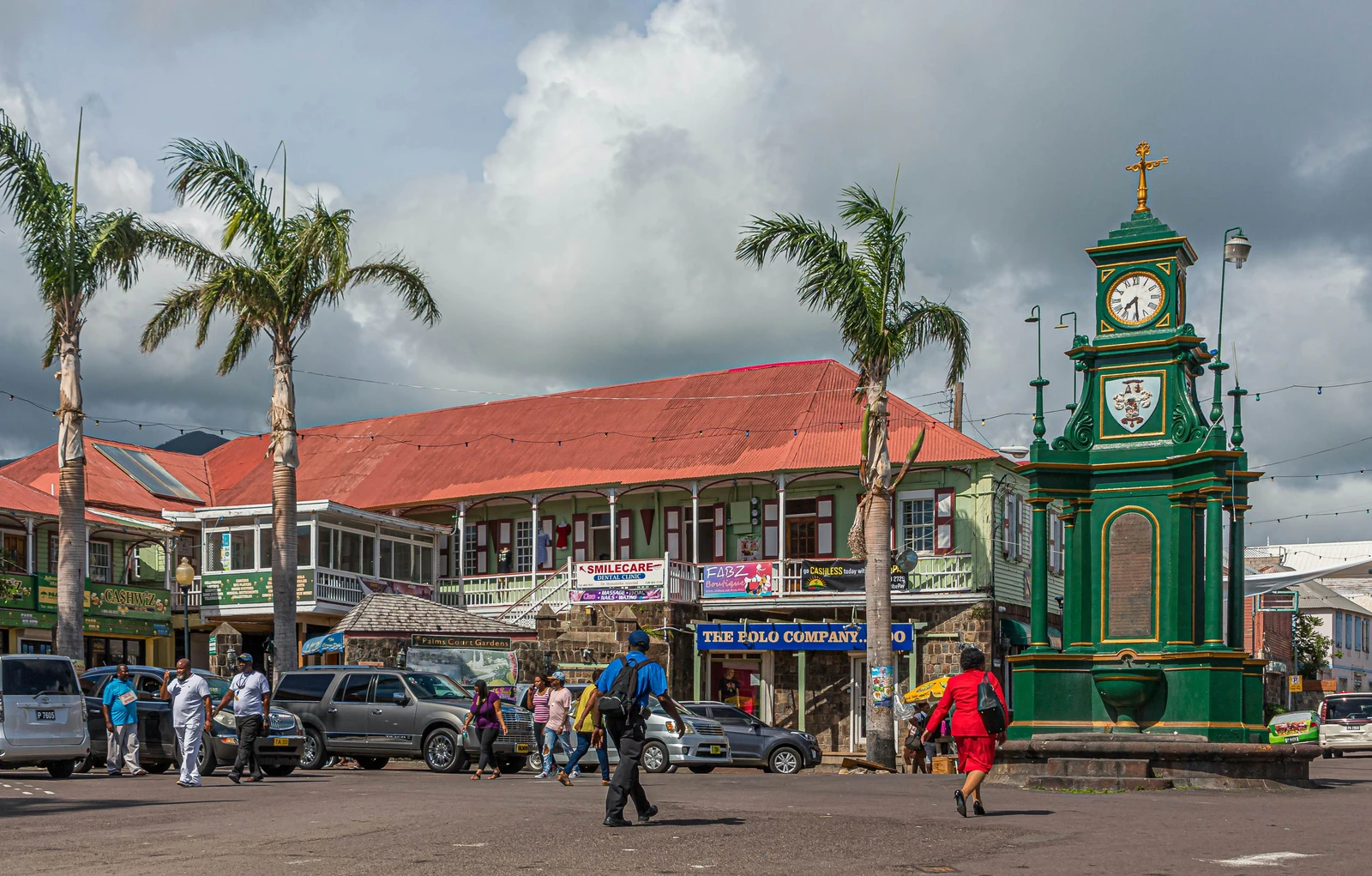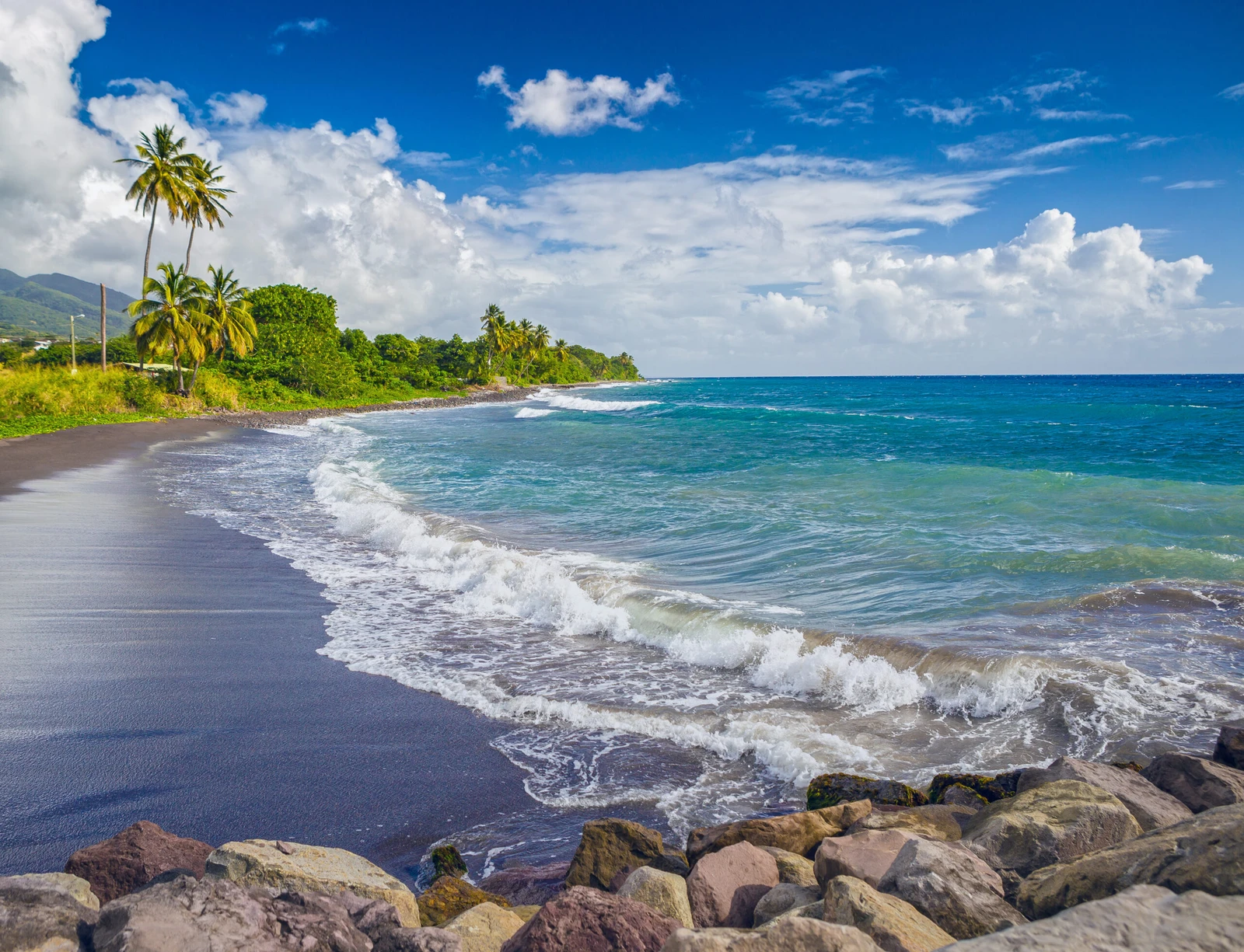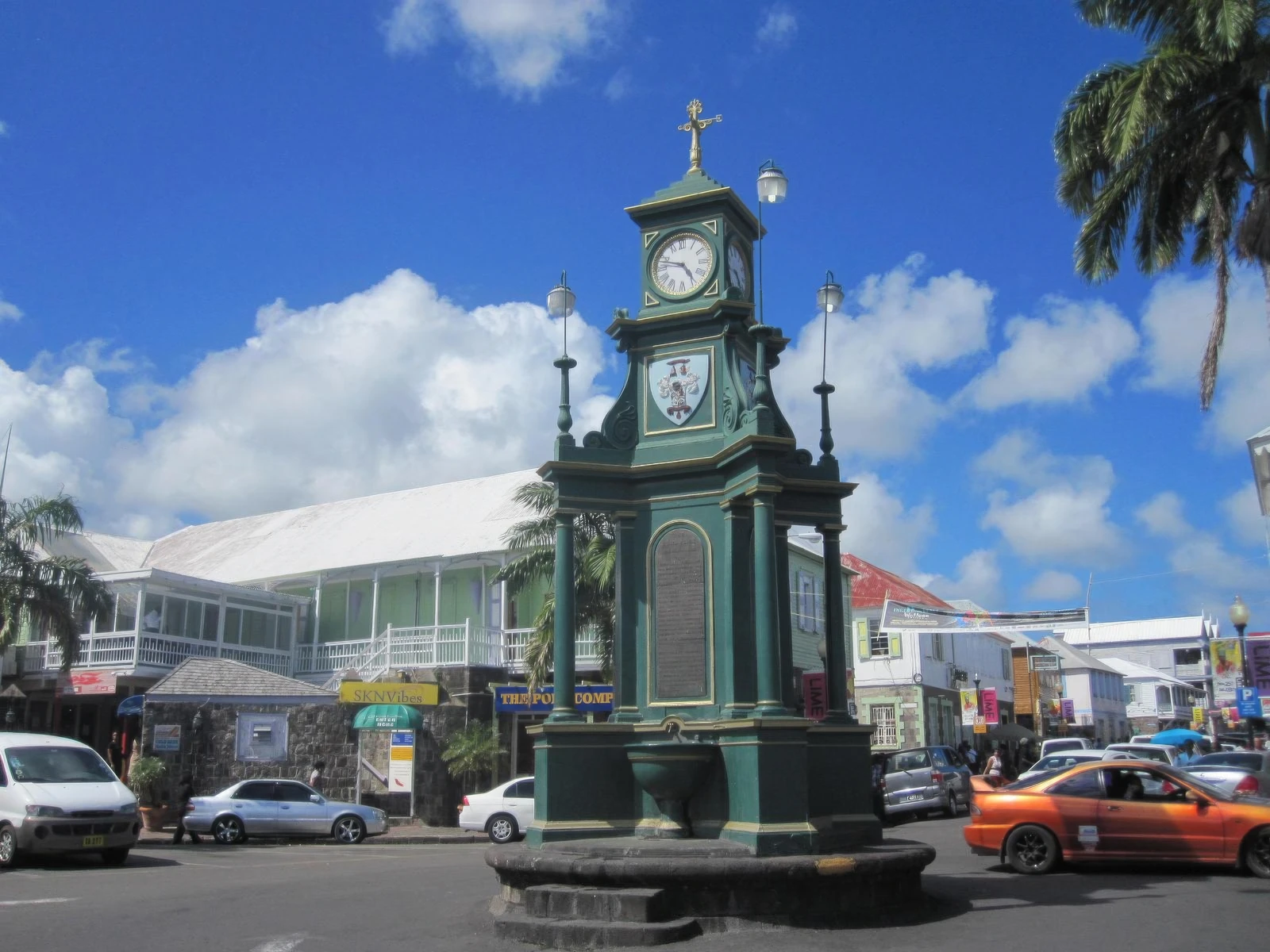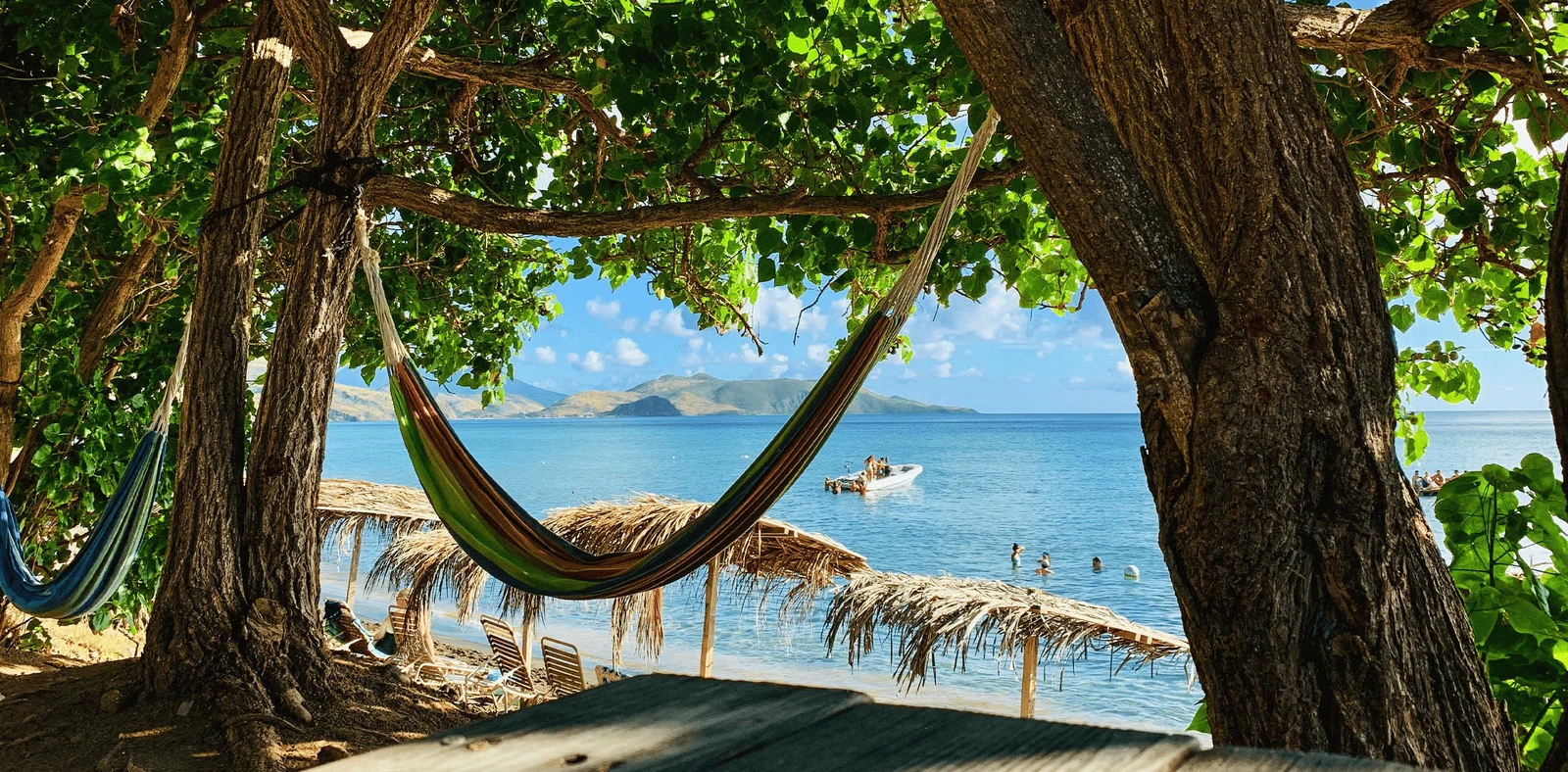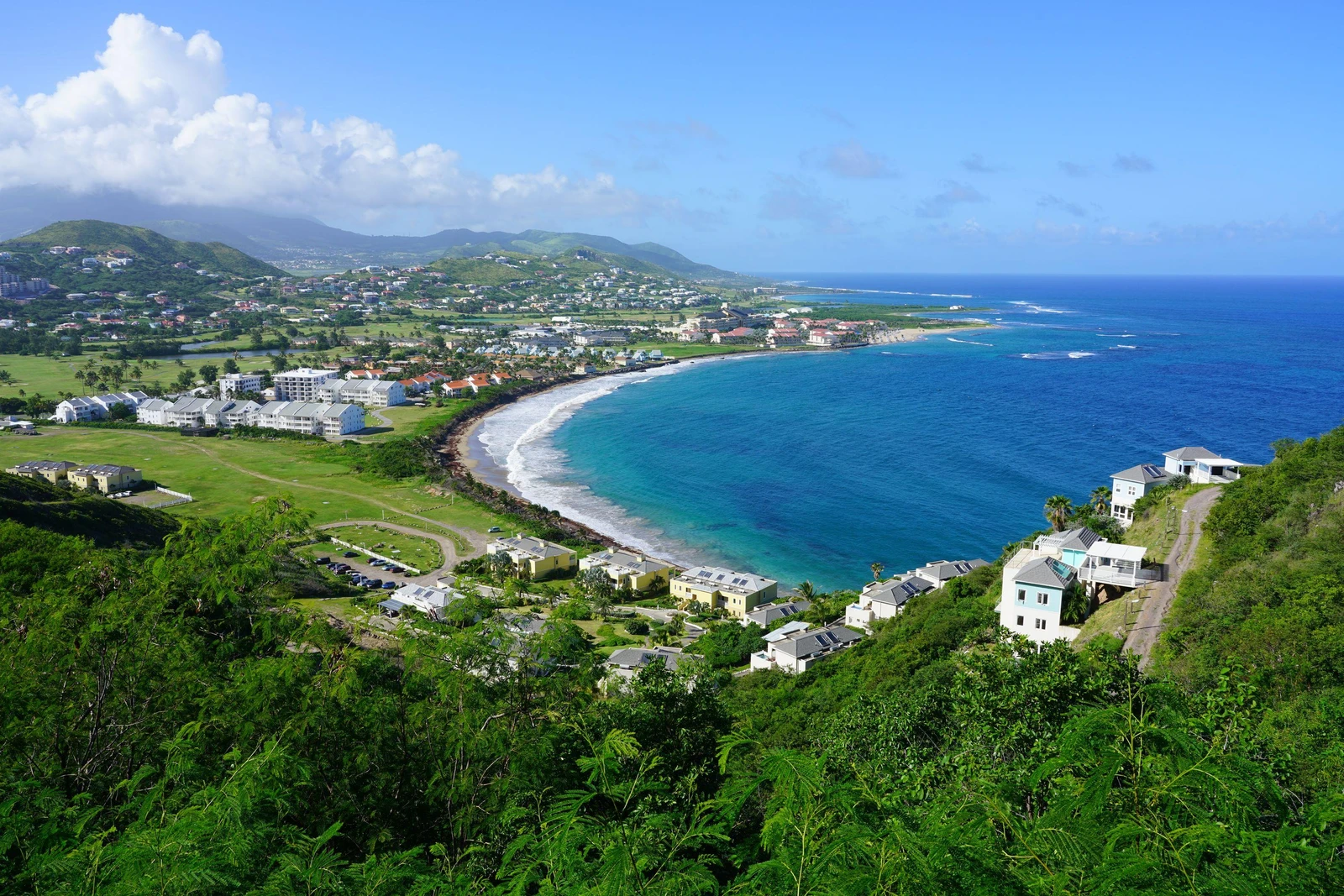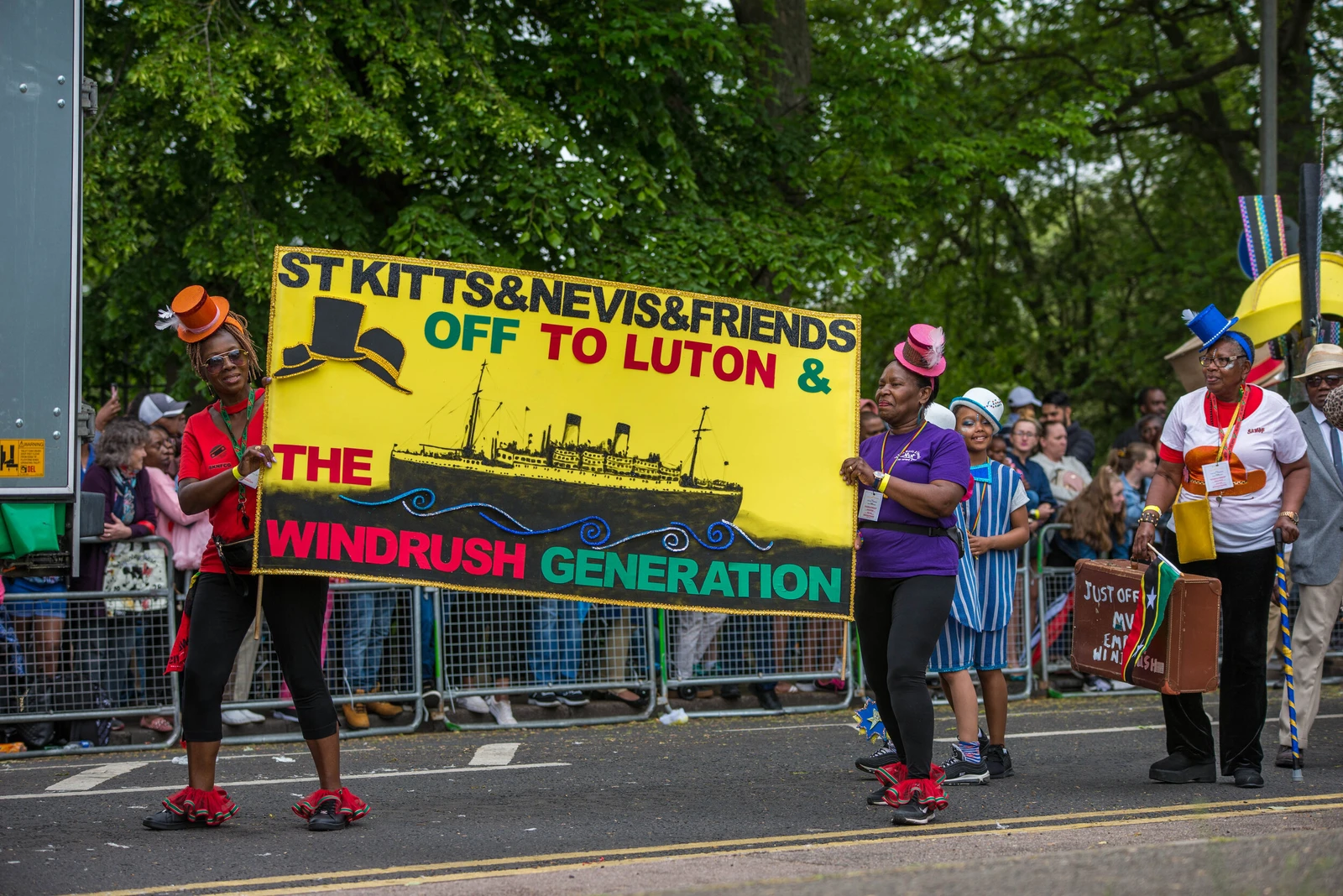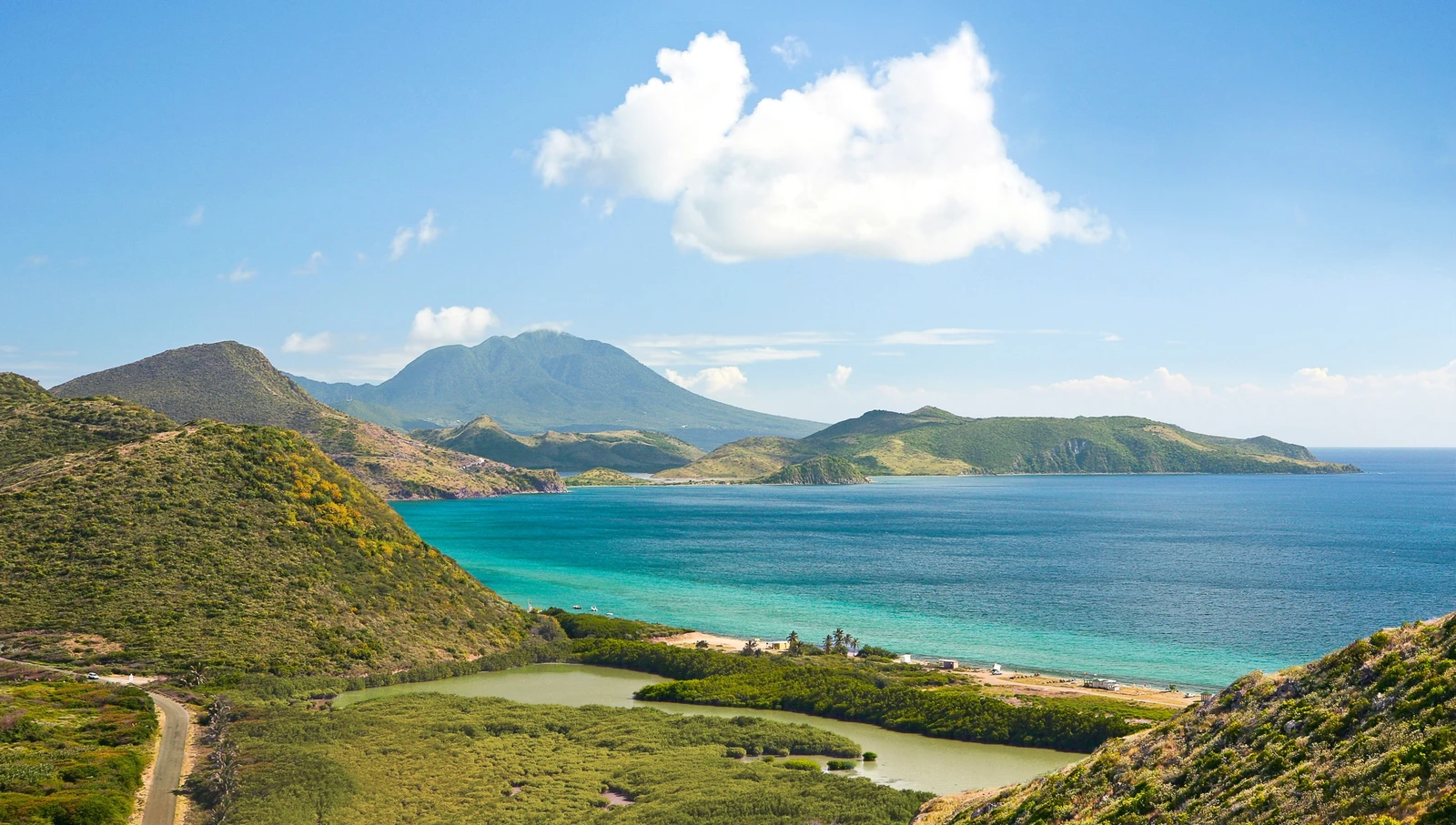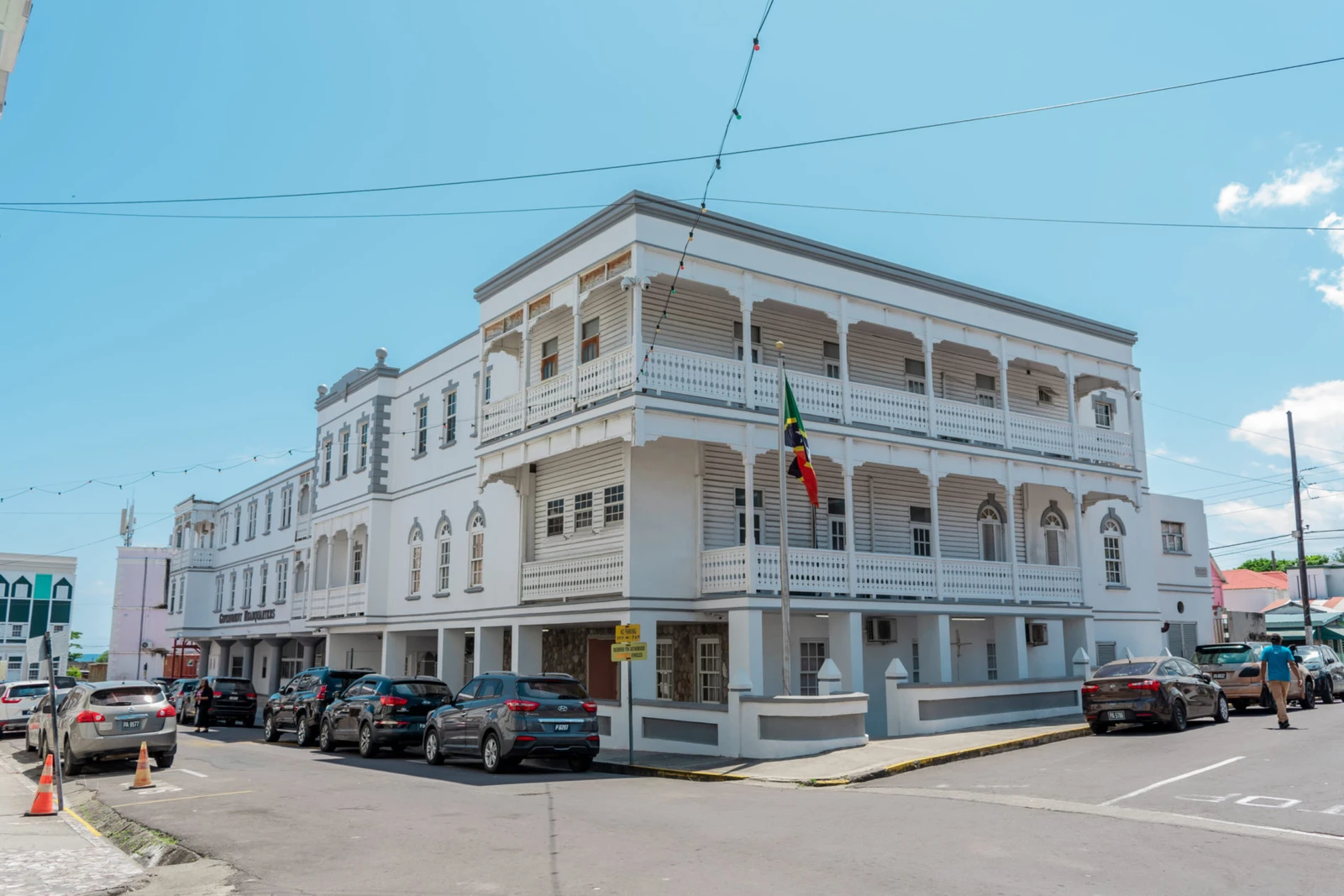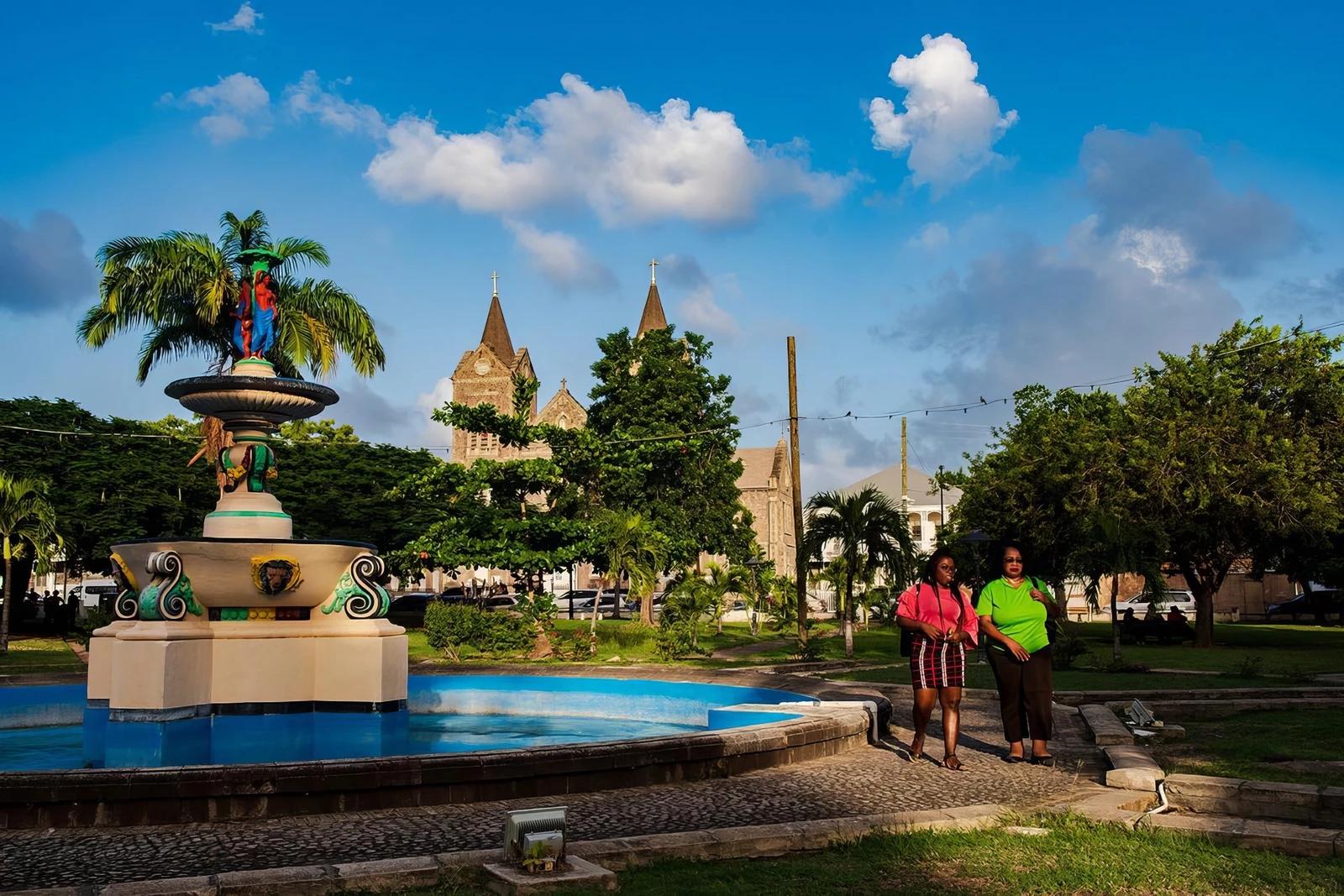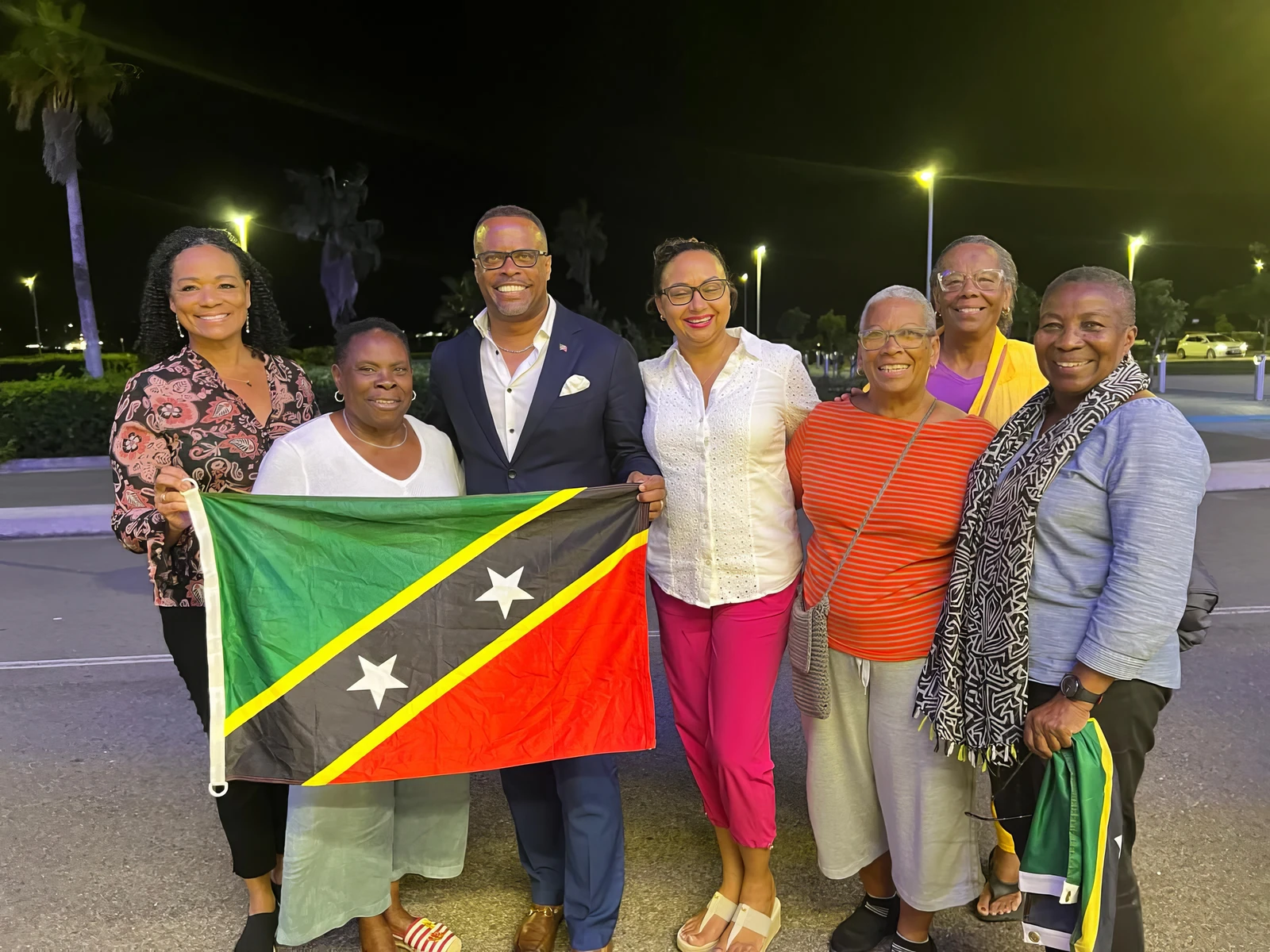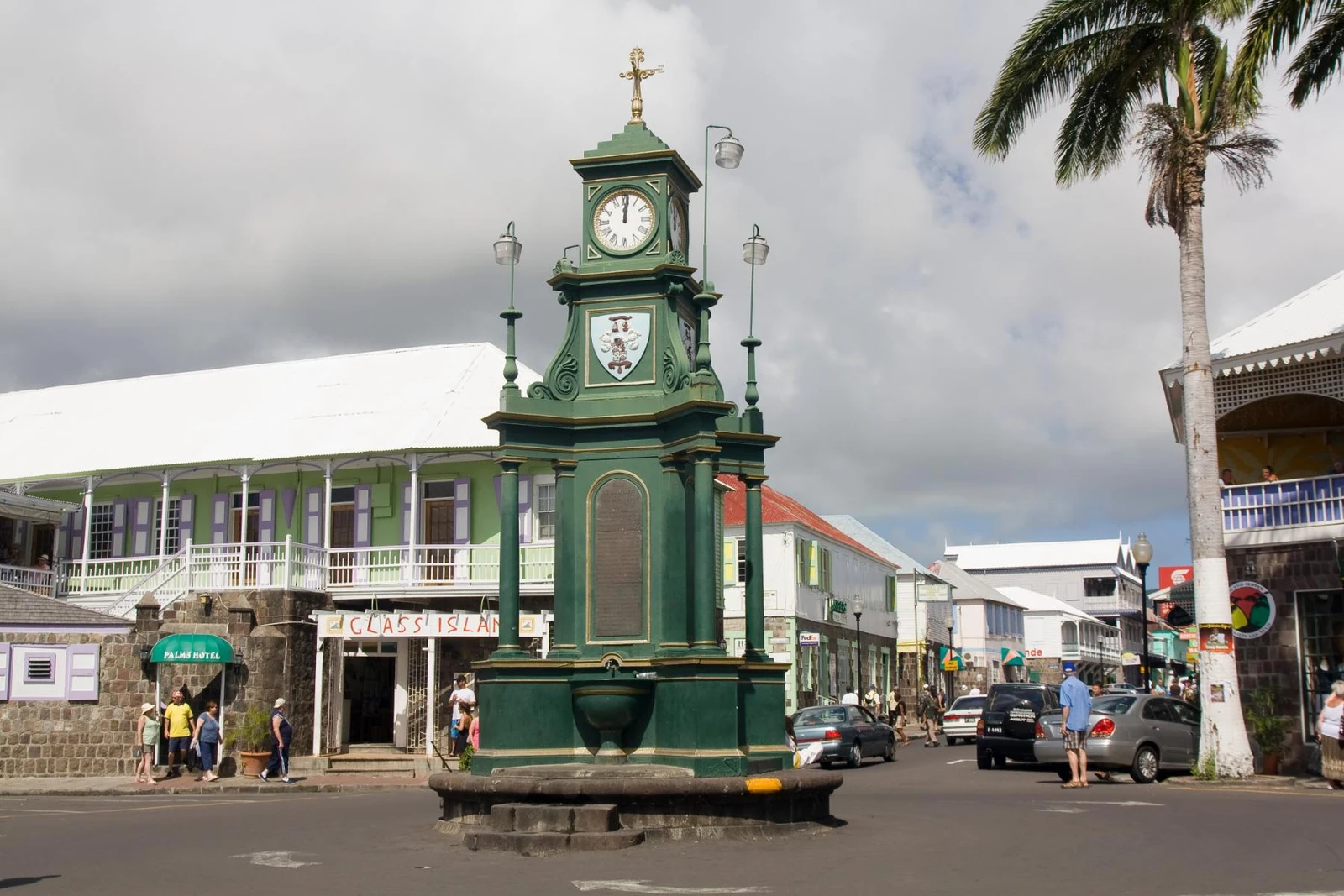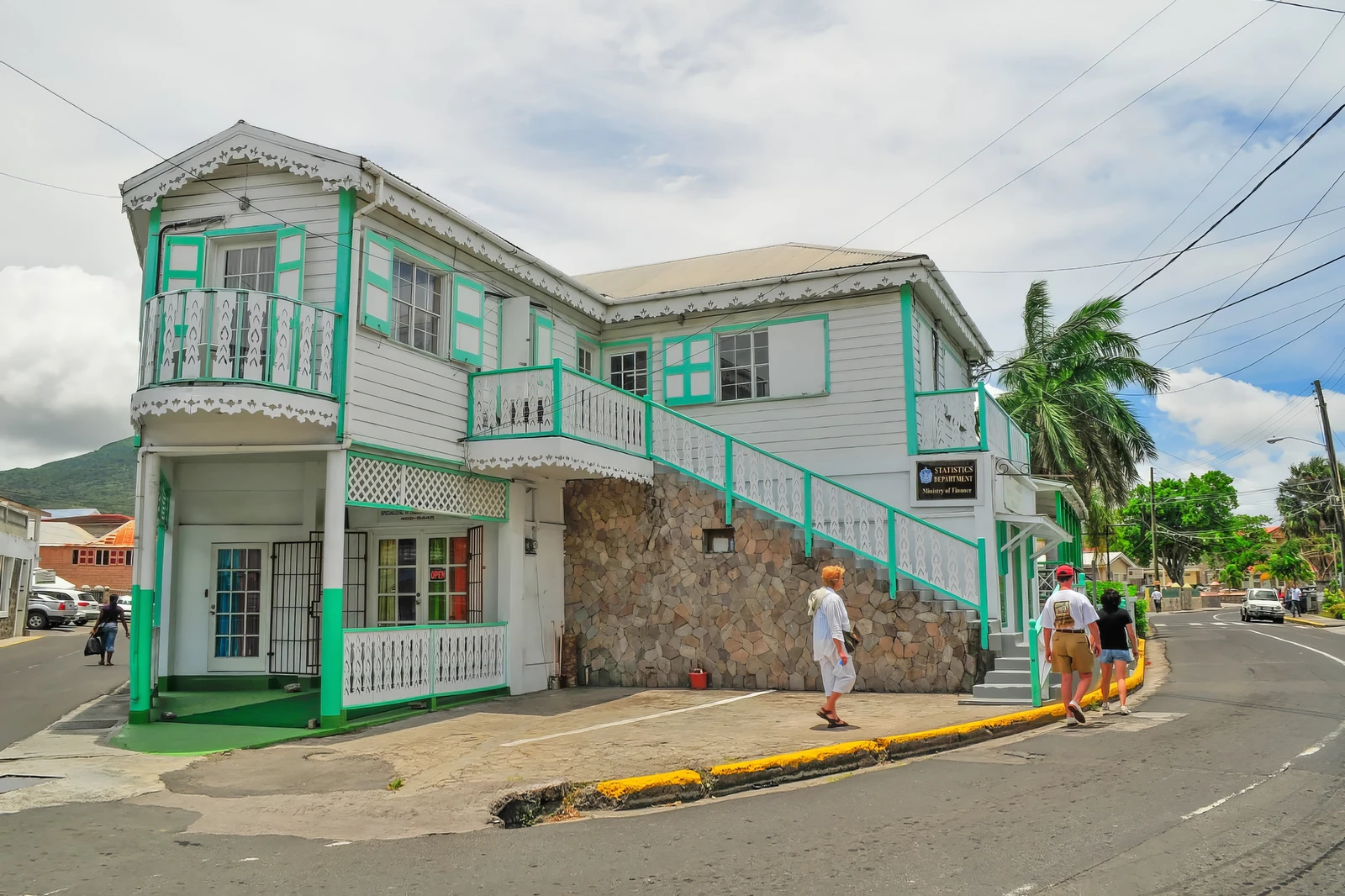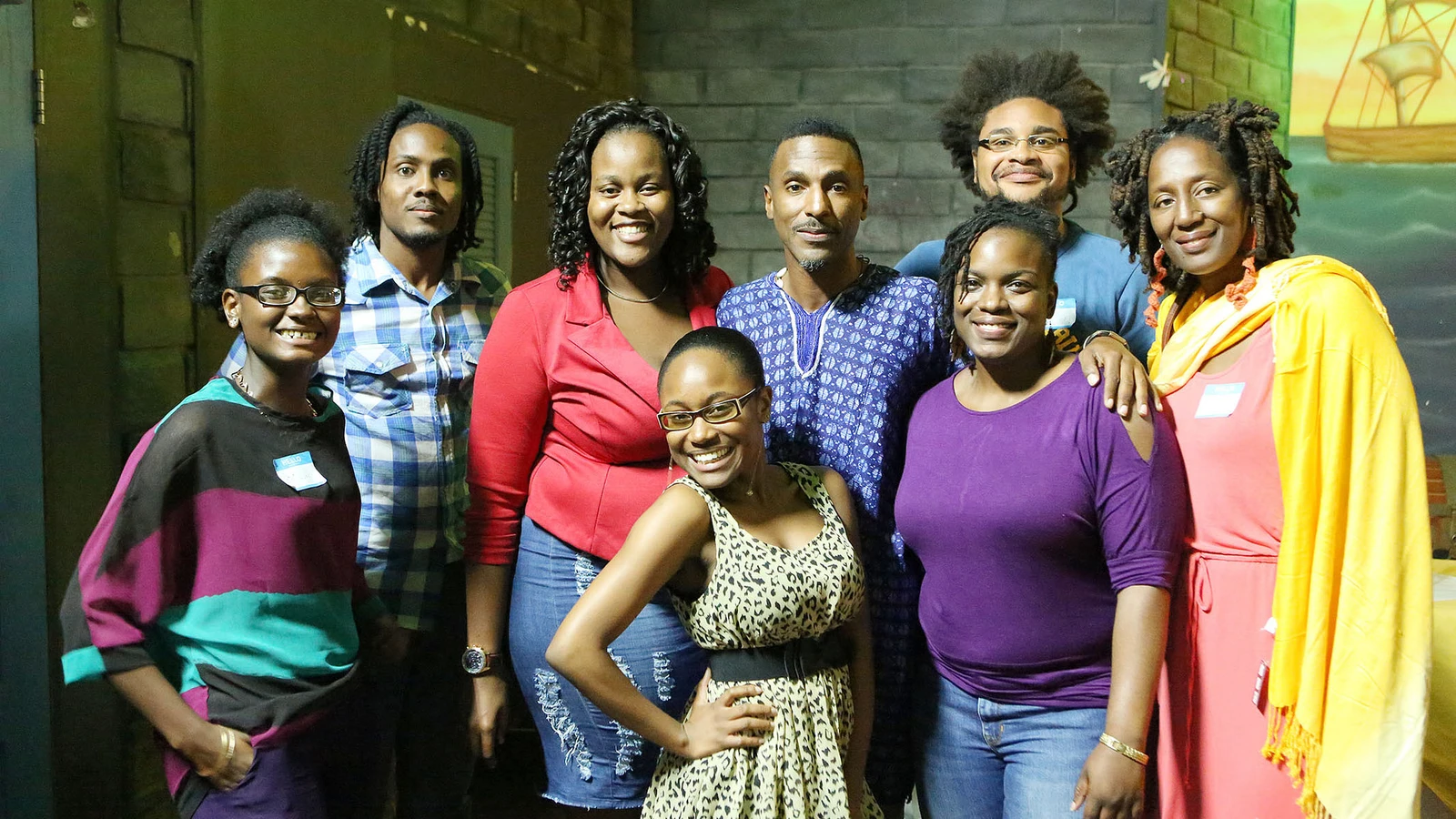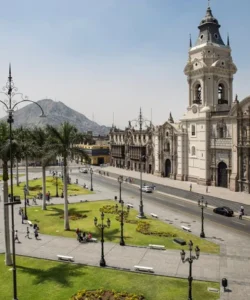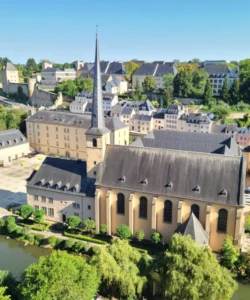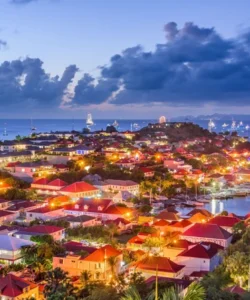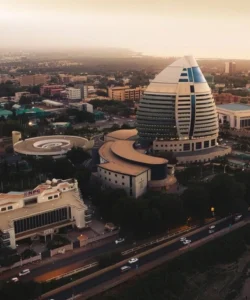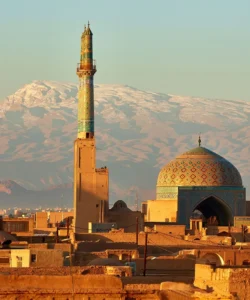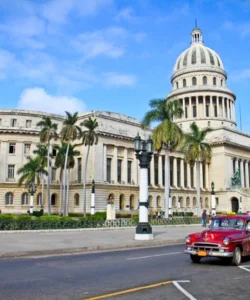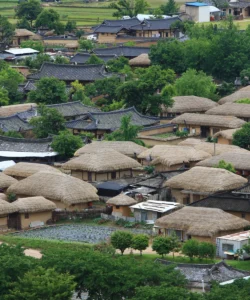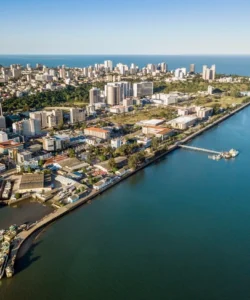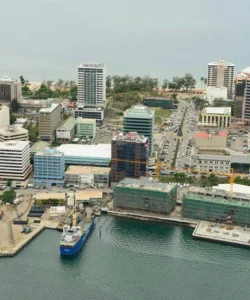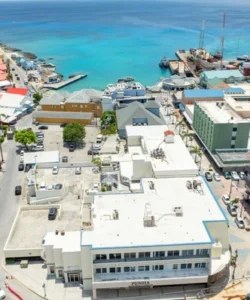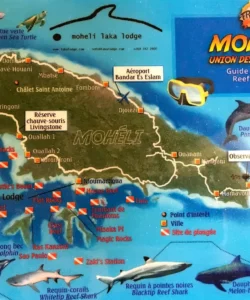Saint Kitts and Nevis is a two-island federation in the Caribbean, known for its lush volcanic landscapes, historical sites, and beautiful beaches. St. Kitts, the larger island, boasts verdant mountains and historical plantations, while Nevis, the smaller and more tranquil island, offers a more laid-back charm with its own distinct character.
![]()
Area and Population:
The total land area of Saint Kitts and Nevis is approximately 261 sq. km (101 sq. mi). St. Kitts covers about 168.4 sq. km (65 sq. mi), and Nevis covers about 93.2 sq. km (36 sq. mi). As of 2023, the estimated population was around 53,104 people, making it the smallest country in the Americas by both land area and population.
Language:
The official language is English, and it is widely spoken. Saint Kitts Creole, a local dialect of Leeward Caribbean English Creole, is also commonly used.
Currency:
The official currency is the Eastern Caribbean Dollar (XCD), which is pegged to the US Dollar at EC$2.70 to US$1.00. The United States Dollar (USD) is also widely accepted.
Religion:
The predominant religion is Christianity, with various Protestant denominations (Methodist, Anglican, Baptist, Church of God) being the most common, alongside Roman Catholicism.
Capital:
The capital city of the Federation of Saint Kitts and Nevis is Basseterre, located on Saint Kitts. Charlestown is the main town on Nevis.
Major Cities/Towns:
Besides Basseterre, other notable towns on St. Kitts include Sandy Point and Cayon. On Nevis, Charlestown is the main hub.
Attractions:
Saint Kitts and Nevis offers a mix of historical, natural, and leisure attractions:
- Brimstone Hill Fortress National Park (St. Kitts): A UNESCO World Heritage site, this impressive 18th-century British fortress, built by enslaved Africans, offers stunning panoramic views of the island and surrounding Caribbean Sea.
- St. Kitts Scenic Railway (St. Kitts): Known as the “Sugar Train,” this narrow-gauge railway once transported sugar cane and now offers a scenic tour around the island, providing picturesque views and historical commentary.
- Mount Liamuiga Volcano (St. Kitts): An active (though dormant) volcano with a mile-wide crater. Hiking to its summit offers a challenging adventure and rewarding views of the “Giant’s Salad Bowl” (the crater filled with foliage).
- Cockleshell Beach (St. Kitts): A popular and lively beach on the southeastern peninsula, known for its calm waters, white sand, and beach bars.
- Nevis Peak (Nevis): The central volcanic peak on Nevis, offering challenging hiking trails through lush rainforest.
- Bath Hotel & Spring House (Nevis): The Caribbean’s first officially registered hotel, dating back to the 18th century, still offers therapeutic hot spring baths.
- Pinney’s Beach (Nevis): A beautiful stretch of golden sand lined with palm trees, popular for swimming and home to several beach bars.
- Charlestown (Nevis): A charming colonial town with well-preserved Georgian architecture, including the Alexander Hamilton Museum (his birthplace).
- Wingfield Estate and Romney Manor (St. Kitts): Historic plantation sites with lush botanical gardens and the Caribelle Batik workshop, where visitors can see the batik process.
Natural Wonders:
The islands’ natural beauty is characterized by their volcanic origins:
- Volcanic Peaks: Mount Liamuiga on St. Kitts and Nevis Peak on Nevis dominate the landscape, providing lush, cloud-forested interiors.
- Black Sand Beaches: On St. Kitts, due to its volcanic origins, while Nevis has some golden and white sand beaches.
- Coral Reefs: Surrounding the islands, offering excellent opportunities for snorkeling and diving.
Architecture:
The architecture in Saint Kitts and Nevis reflects its colonial past, primarily British, with adaptations to the tropical environment.
- Georgian Style: Prominent in Basseterre and Charlestown, characterized by symmetrical facades, classical elements, and sturdy construction. Many historical buildings around Independence Square in Basseterre are examples.
- Plantation Great Houses: Remaining structures on former sugar plantations showcase grand colonial designs with wide verandas and stone construction.
- Traditional Caribbean: Simpler wooden homes, often brightly painted, designed for ventilation with louvered windows and elevated foundations.
- Fortifications: Impressive military architecture, most notably Brimstone Hill Fortress.
Roads:
Saint Kitts and Nevis have generally well-maintained roads, especially along the coastal ring roads on both islands. Driving is on the left-hand side of the road. While the main routes are good, some inland or rural roads can be narrow, winding, and steep, particularly on Nevis. Public transportation mainly consists of privately owned minibuses that operate on fixed routes, and taxis are widely available, especially for tourists. A car ferry operates between St. Kitts (Majors Bay) and Nevis (Cades Bay).
Hotels:
The islands offer a range of accommodations from large resorts to intimate boutique hotels and charming guesthouses.
- St. Kitts Marriott Resort & The Royal Beach Casino (St. Kitts): A major full-service resort.
- Park Hyatt St. Kitts Christophe Harbour (St. Kitts): A luxury resort on the southeastern peninsula.
- Four Seasons Resort Nevis (Nevis): A renowned luxury resort with a golf course and spa.
- Belle Mont Farm (St. Kitts): An eco-luxury resort on Kittitian Hill.
- Nisbet Plantation Beach Club (Nevis): A historic plantation inn offering a charming experience.
Restaurants:
The culinary scene in Saint Kitts and Nevis blends fresh seafood with Caribbean, African, and British influences.
- Spice Mill Restaurant & Bar (St. Kitts): Located on Cockleshell Beach, known for its fresh seafood and lively atmosphere.
- The Strip (Frigate Bay, St. Kitts): A cluster of popular beach bars and grills offering casual dining, drinks, and often live music.
- Sunshine’s Beach Bar & Grill (Nevis): Famous for its “Killer Bee” rum punch and fresh grilled lobster on Pinney’s Beach.
- Bananas (Nevis): A charming restaurant tucked away in the hills, known for its creative Caribbean and international cuisine.
- Sprat Net (St. Kitts): A rustic, popular spot for fresh grilled fish and lobster.
- Many hotels and resorts also feature their own high-quality restaurants.
Cuisine:
Kittitian and Nevisian cuisine is hearty and flavorful, centered around fresh local ingredients.
- Saltfish and Johnnycakes (or Bakes): Considered the national dish, consisting of stewed salted codfish served with fried dough cakes.
- Goat Water: A rich and hearty goat stew, a local specialty.
- Conch Fritters: Deep-fried savory fritters made with local conch meat.
- Cook-up (or Pelau): A one-pot rice dish with chicken, pigeon peas, and vegetables, seasoned with coconut milk and spices.
- Fresh Seafood: Including grilled fish (snapper, mahi-mahi), lobster, and shrimp.
- Local Produce: Breadfruit, yams, sweet potatoes, plantains, and a variety of tropical fruits.
- Bush Tea: Herbal teas made from local plants.
- Local Rum: Saint Kitts and Nevis has a history of sugar production, and rum is a popular local spirit.
